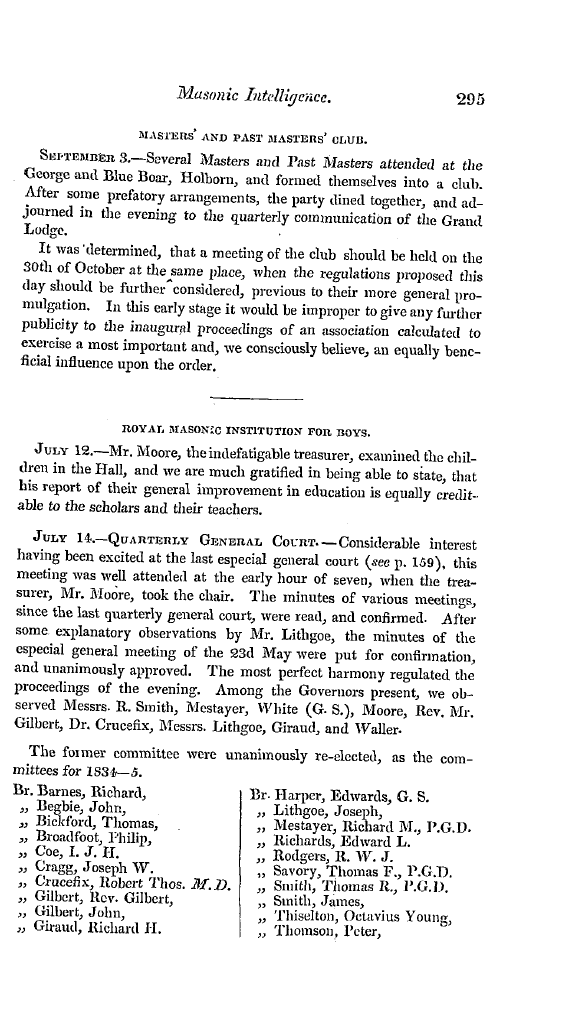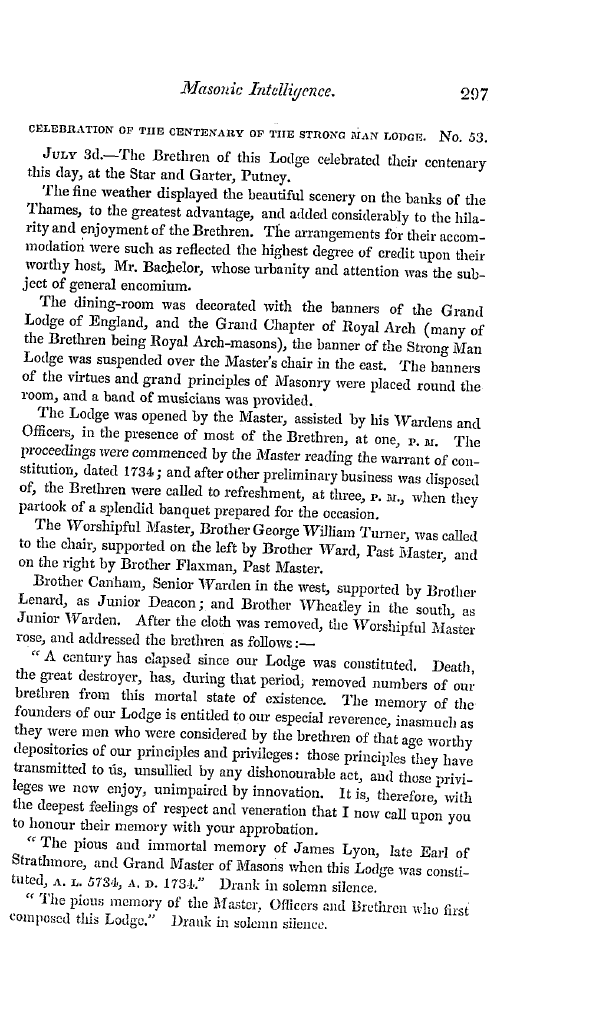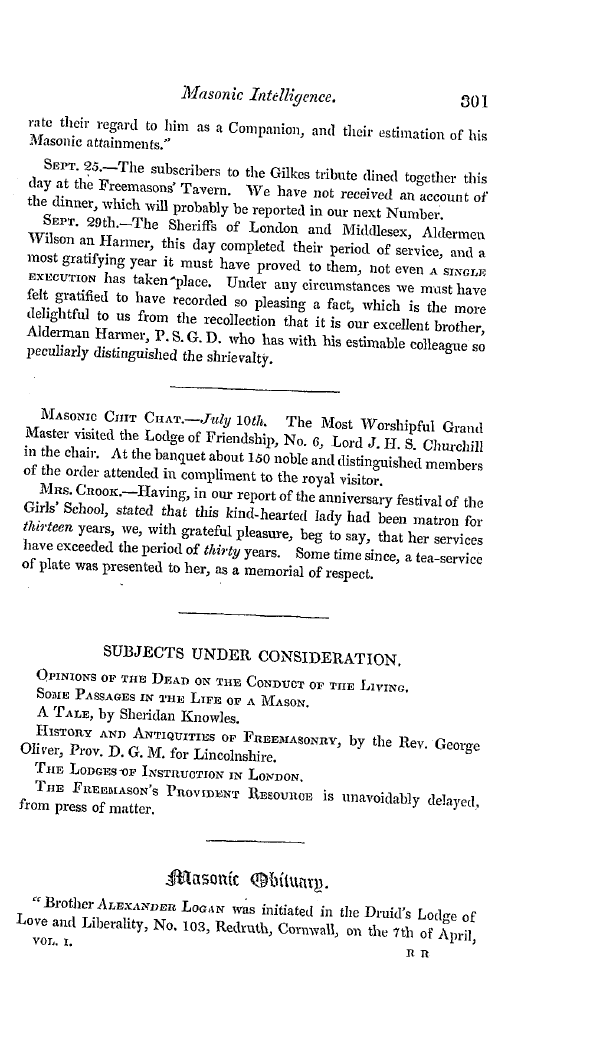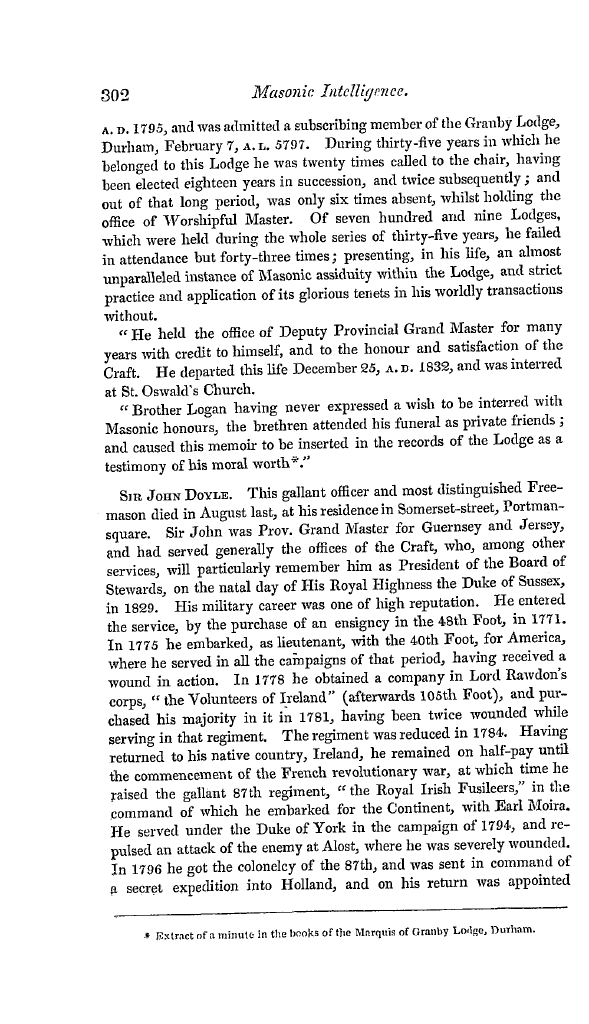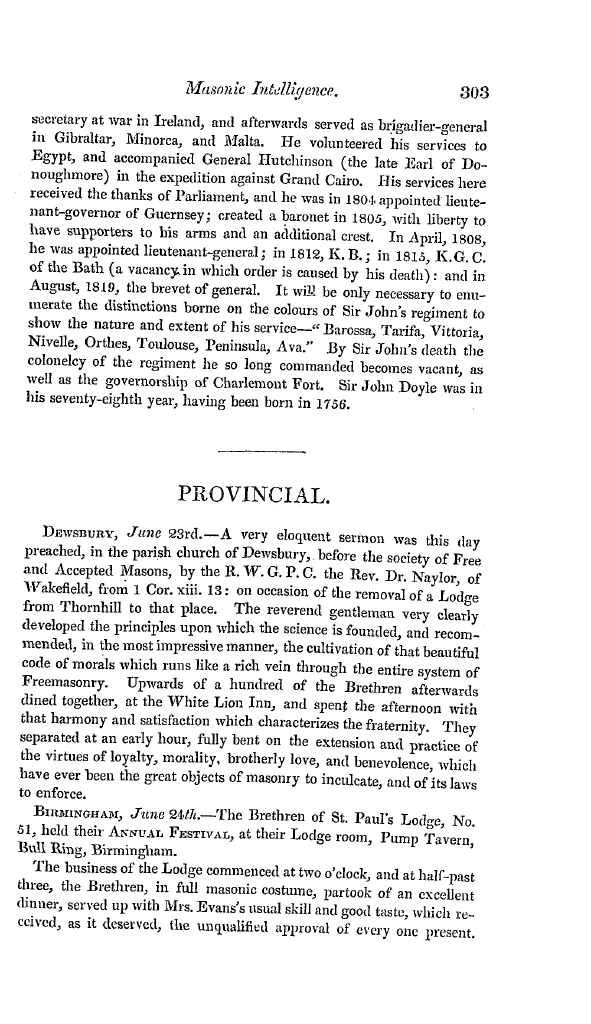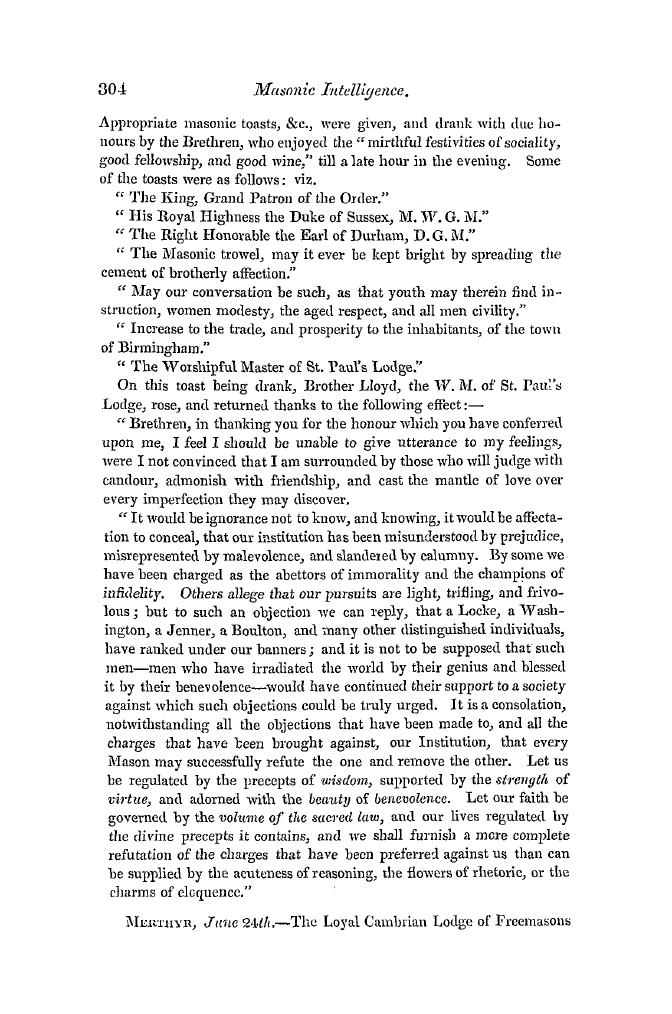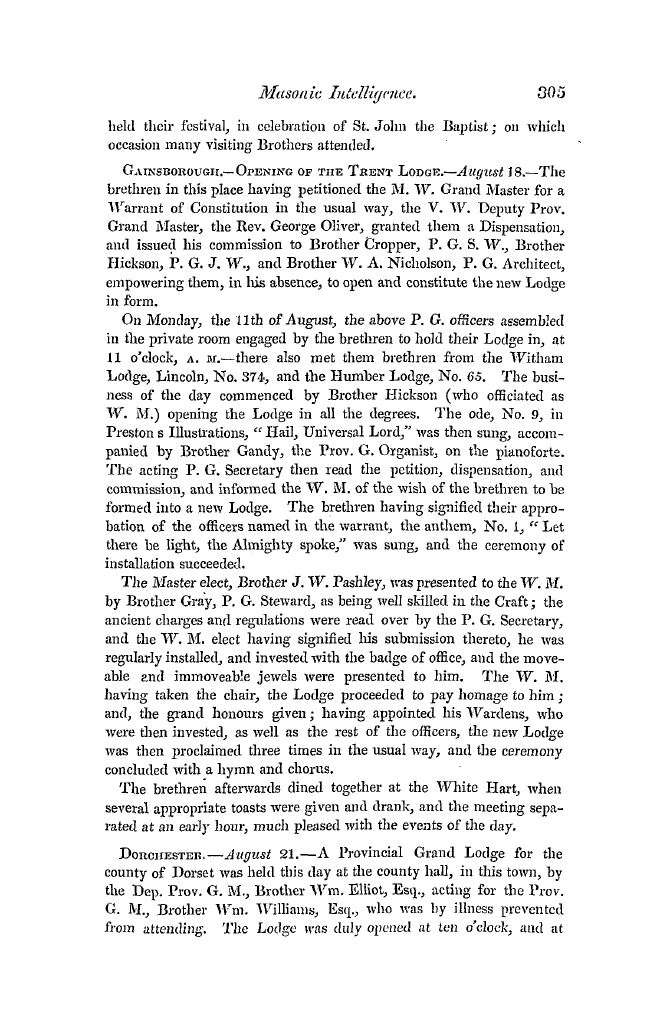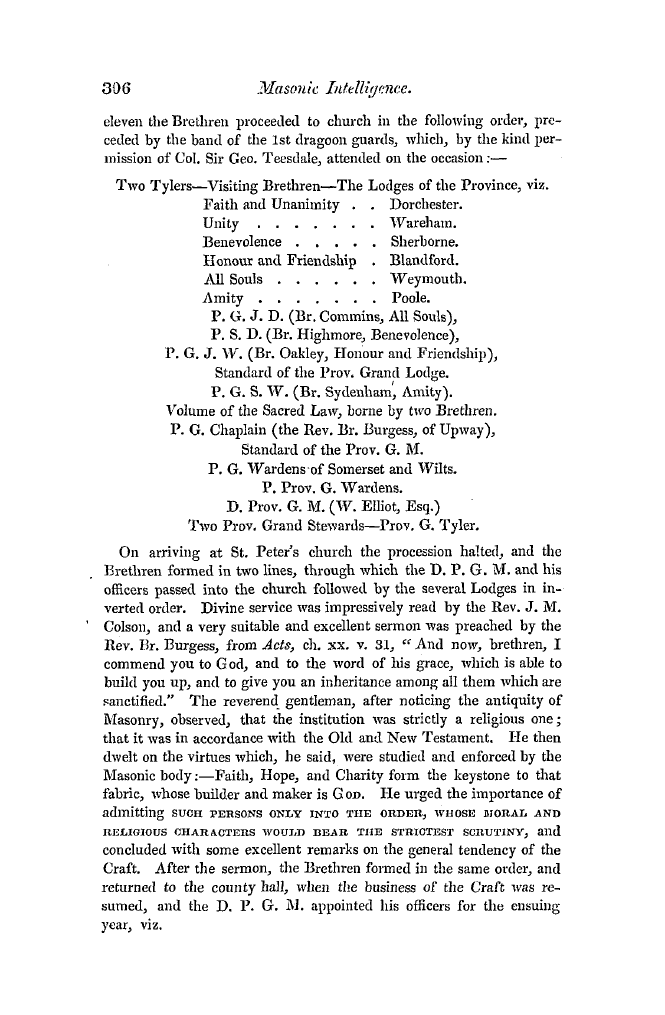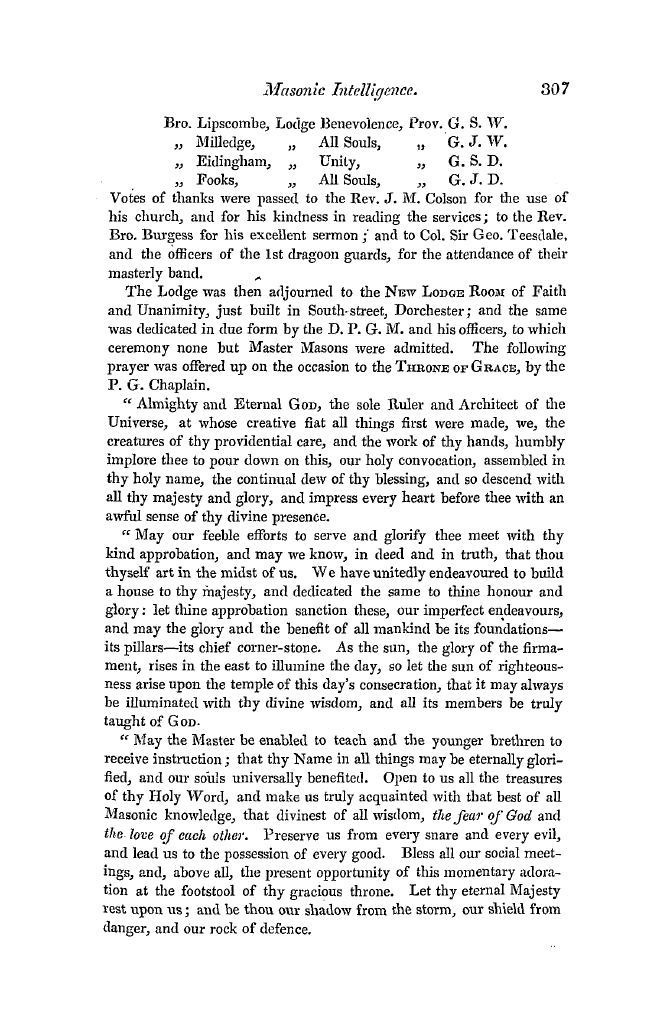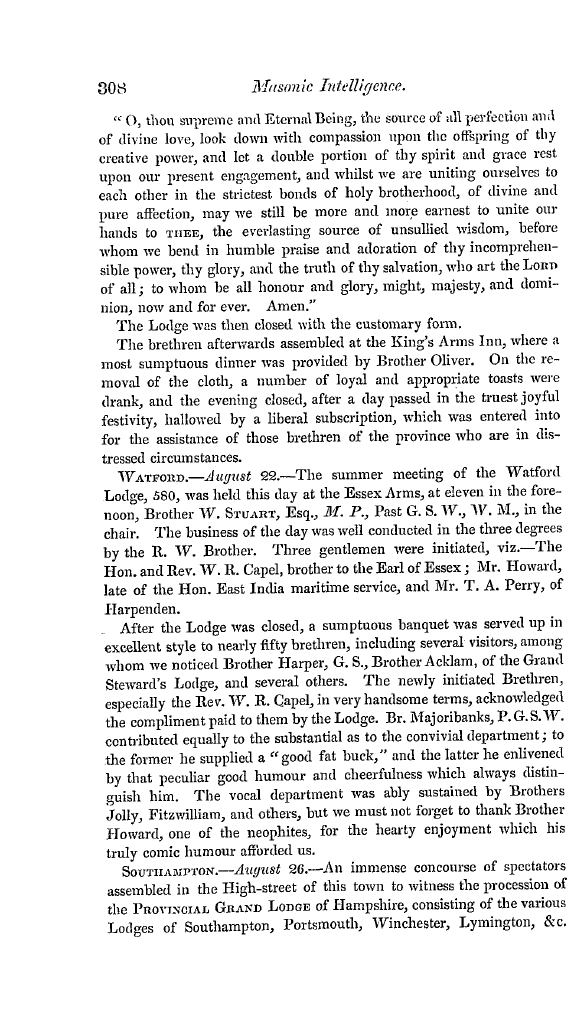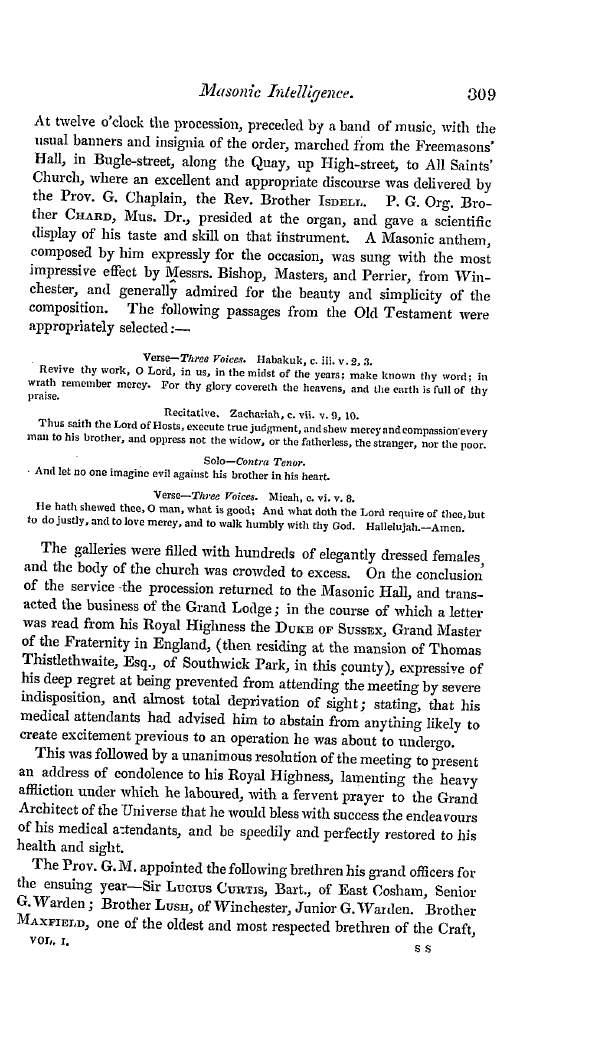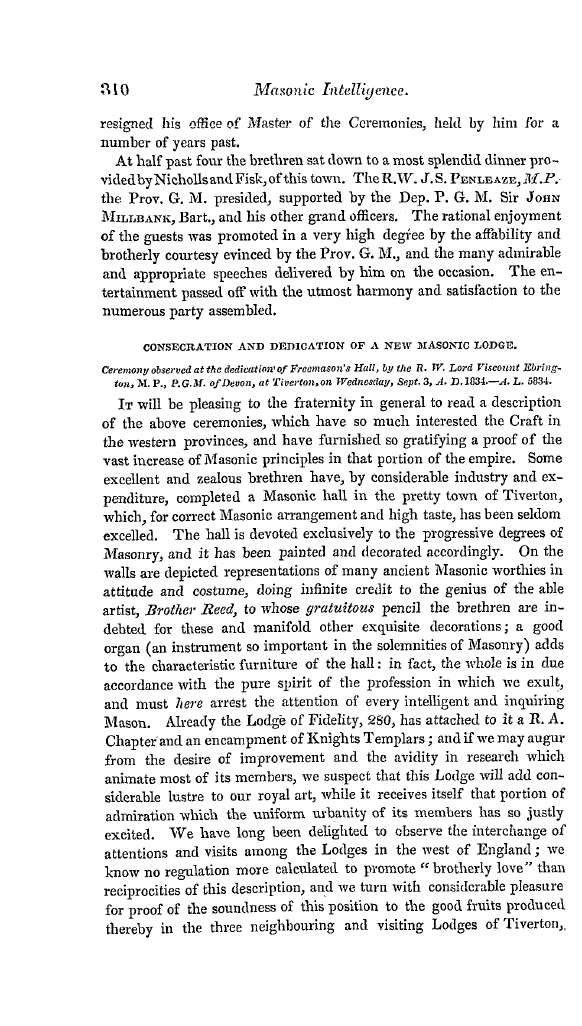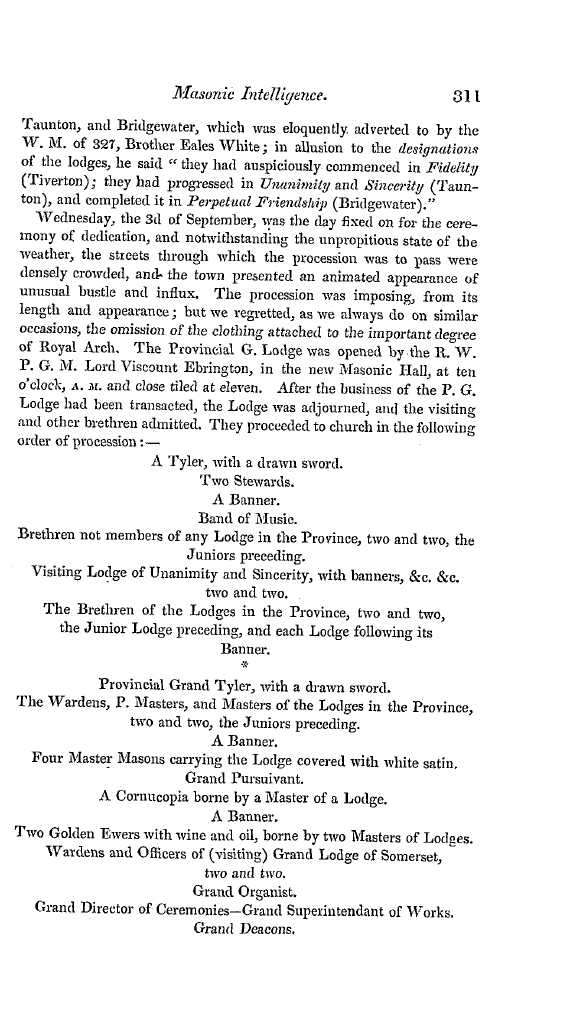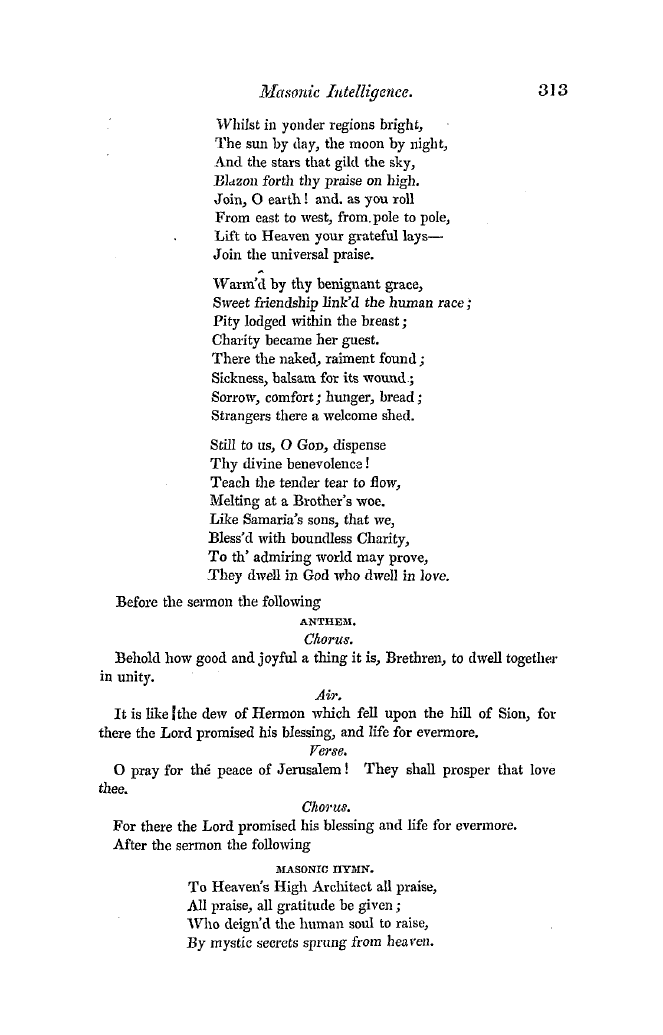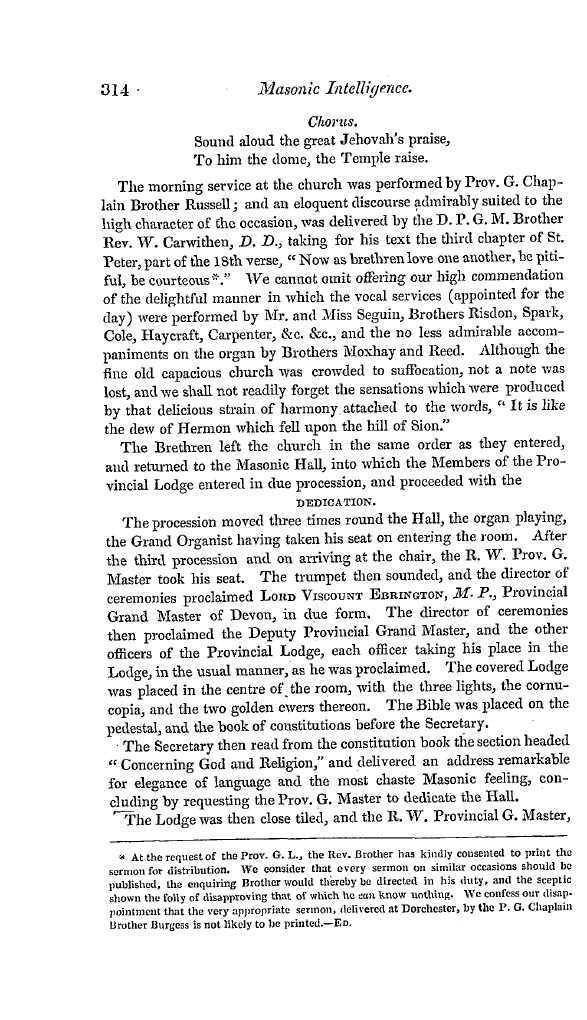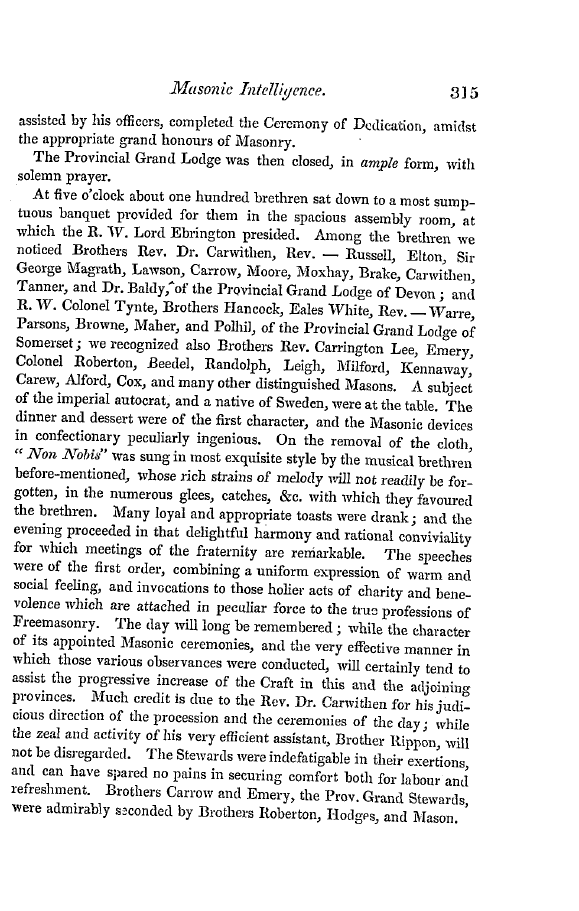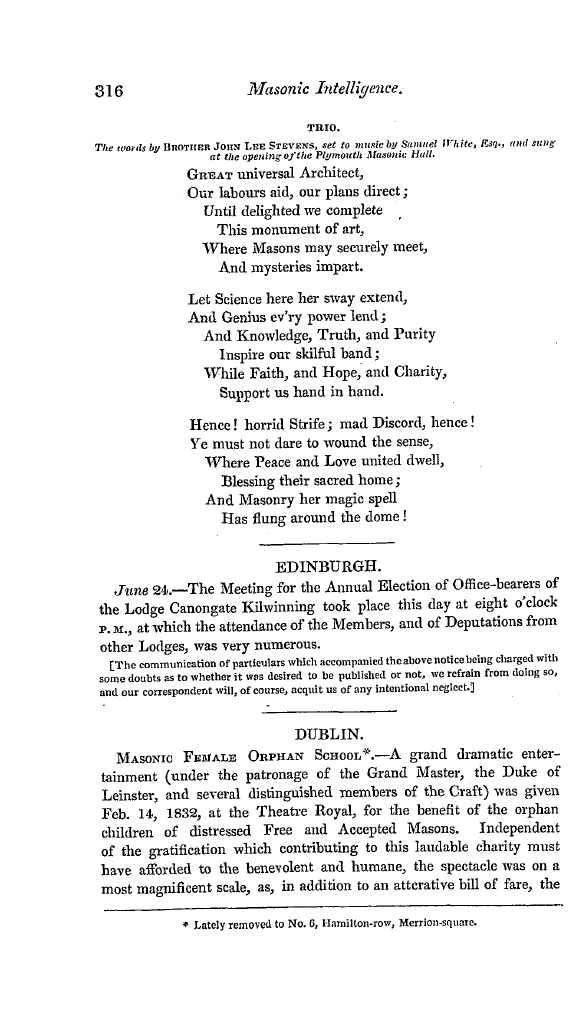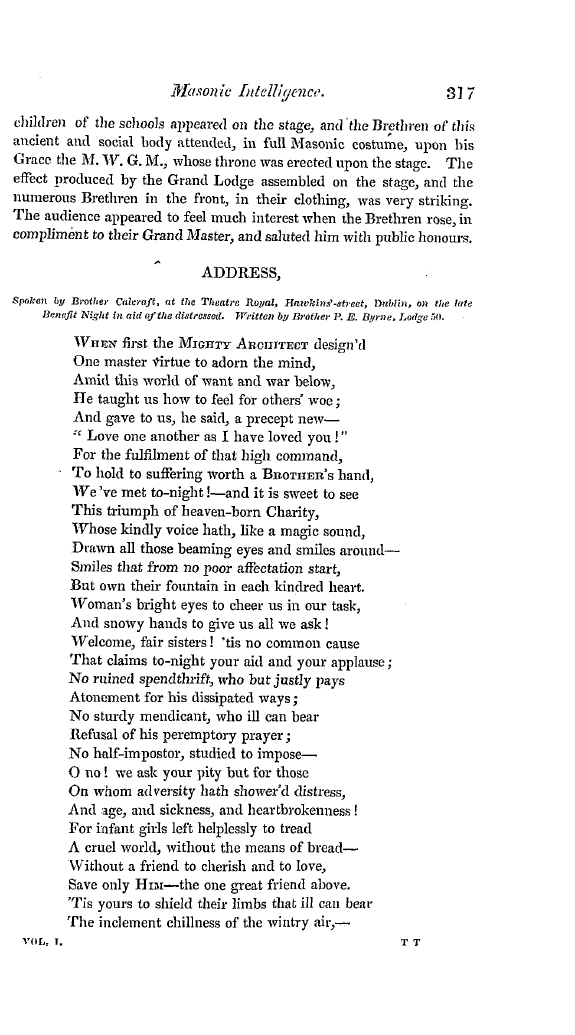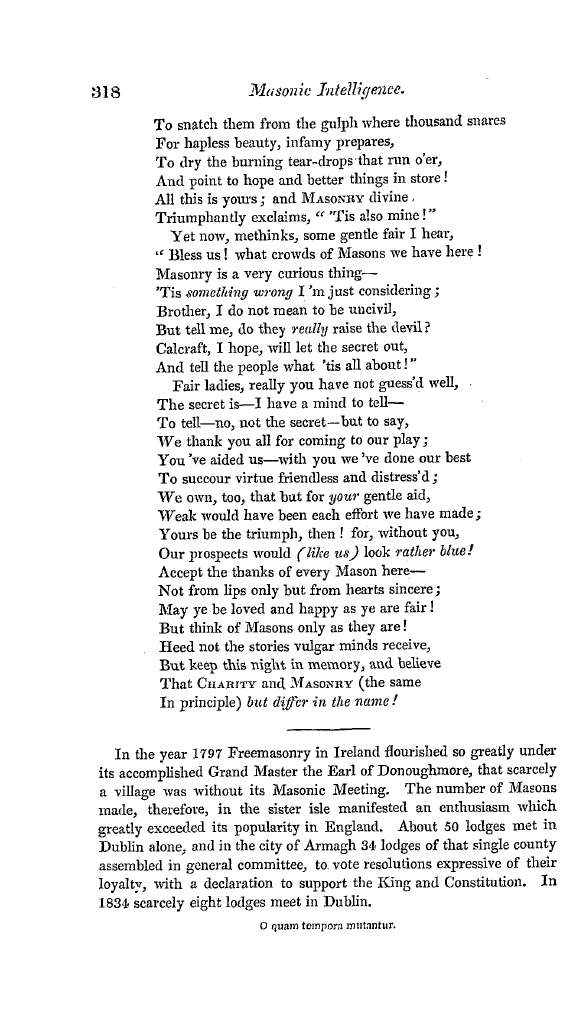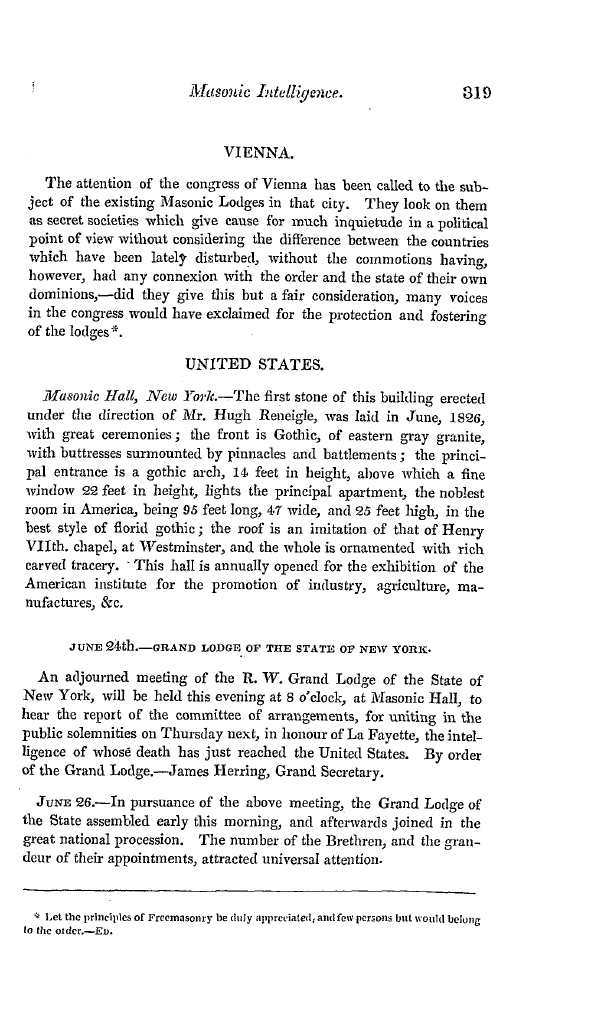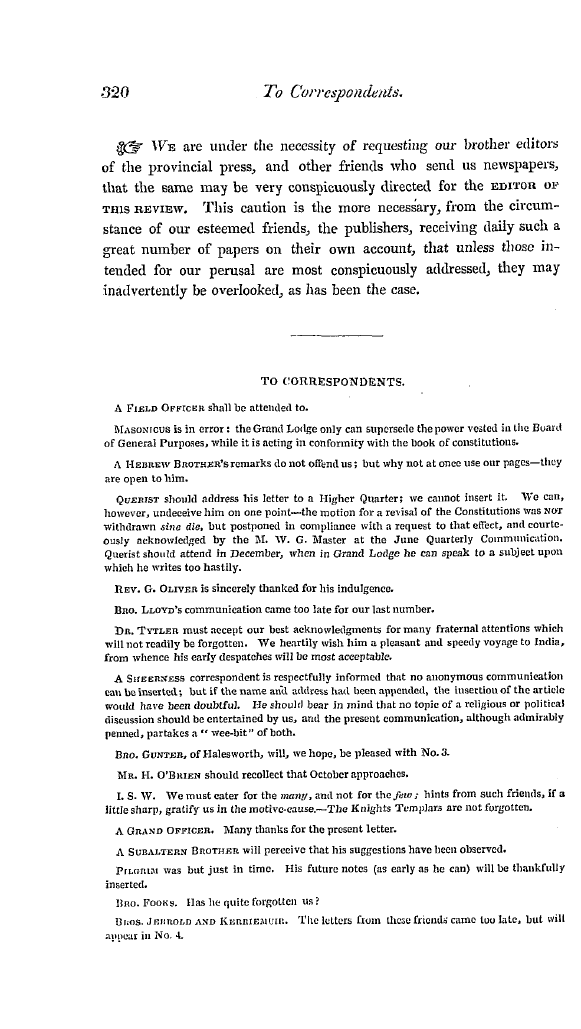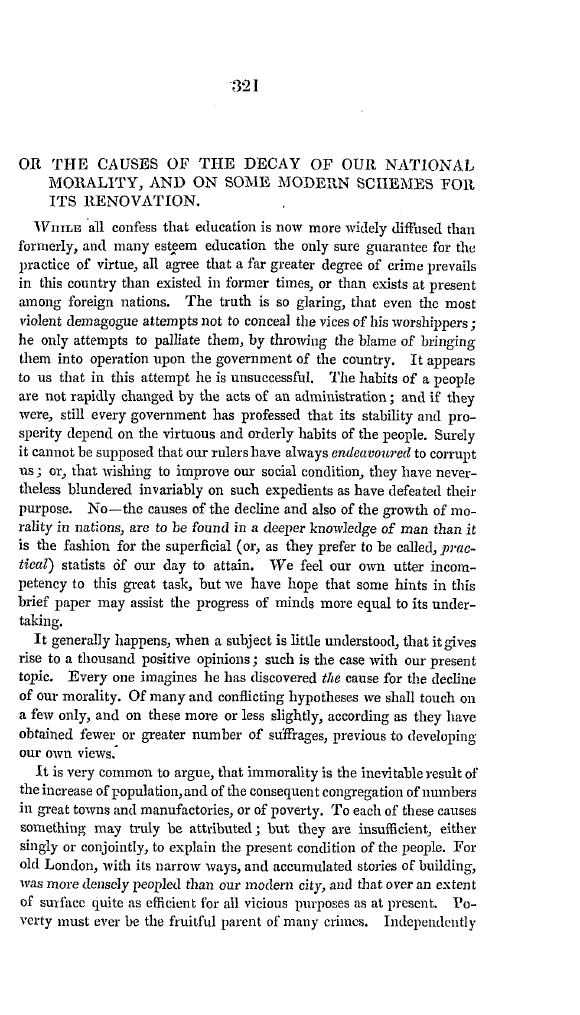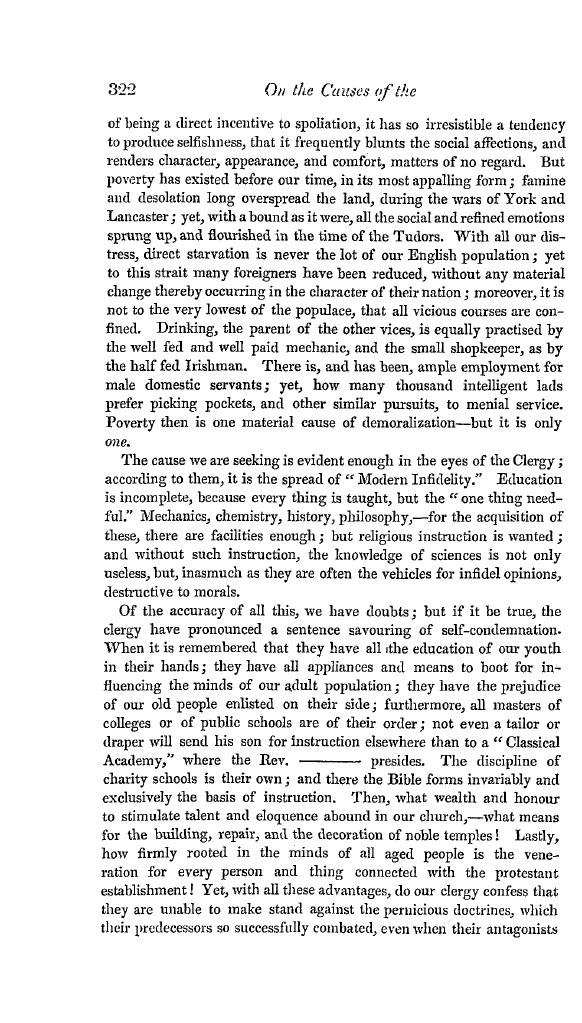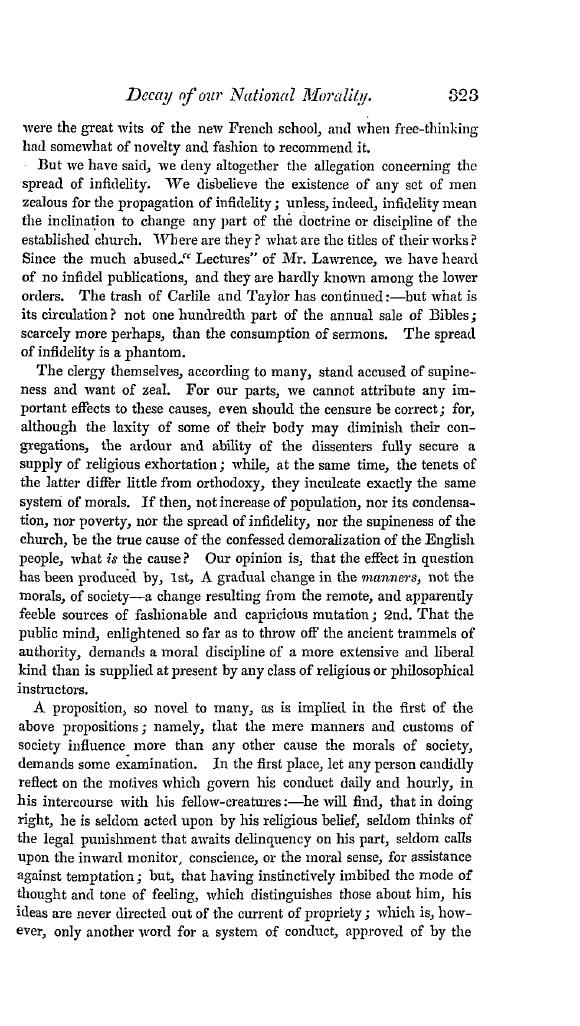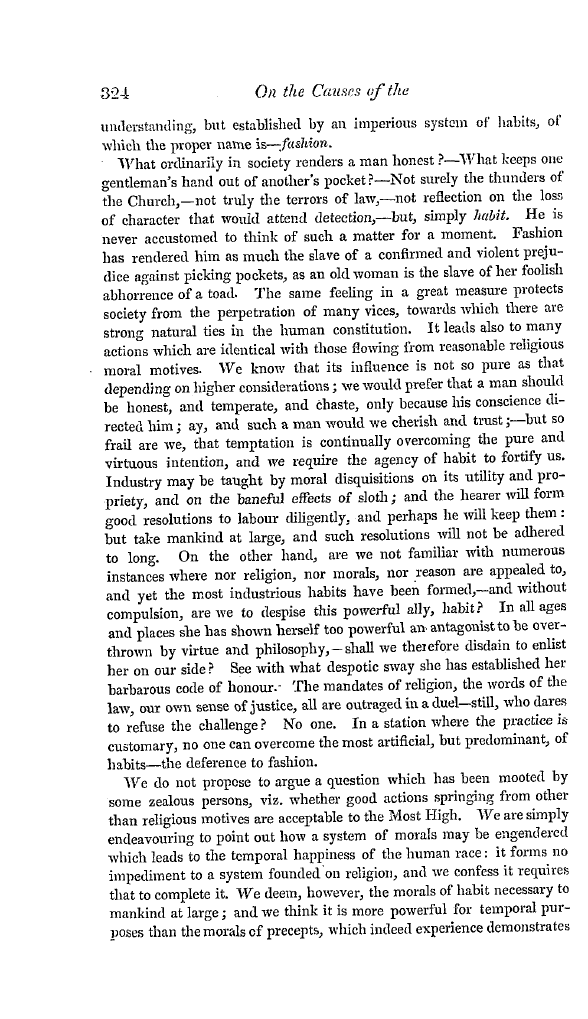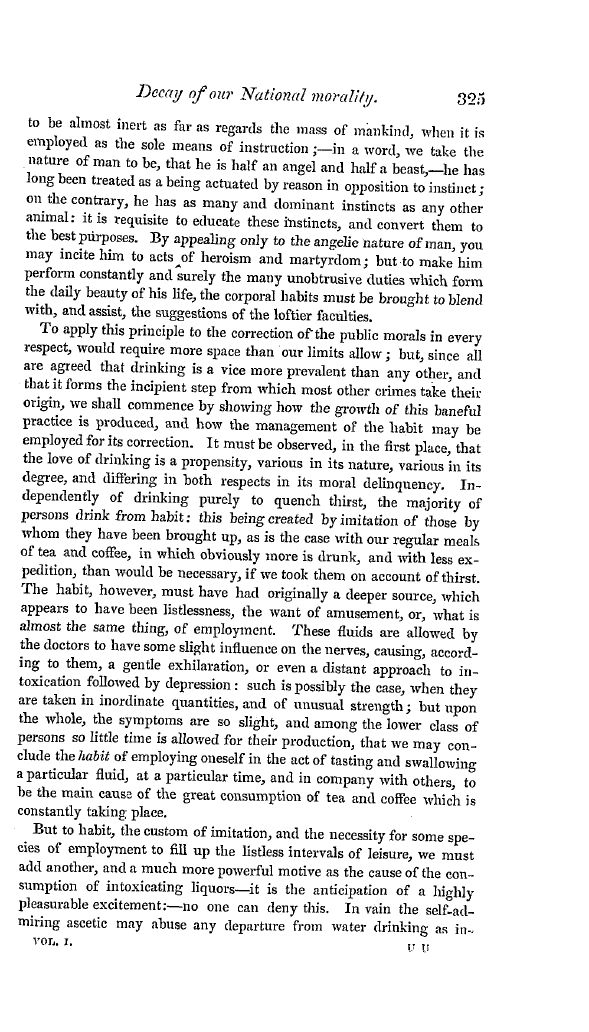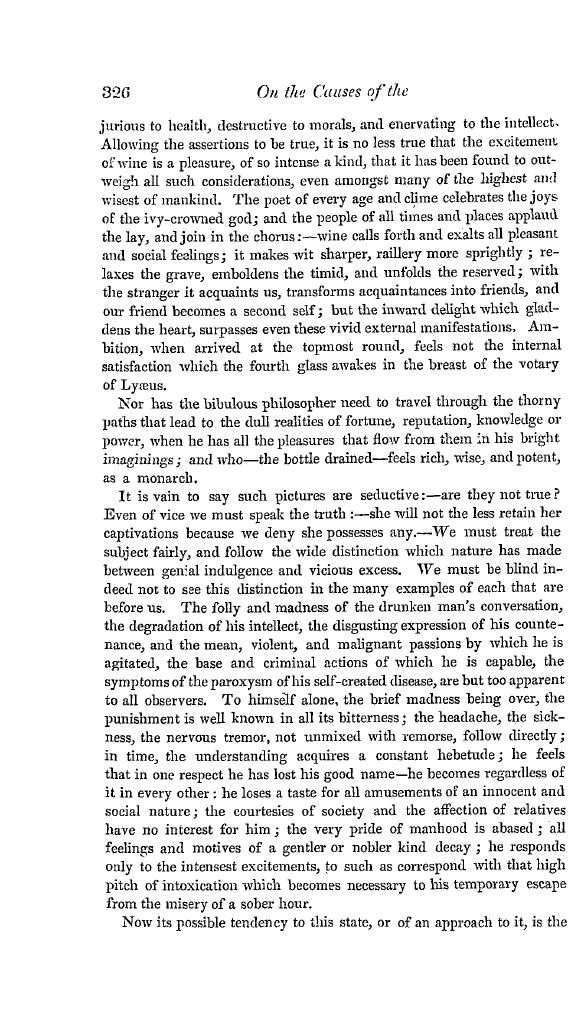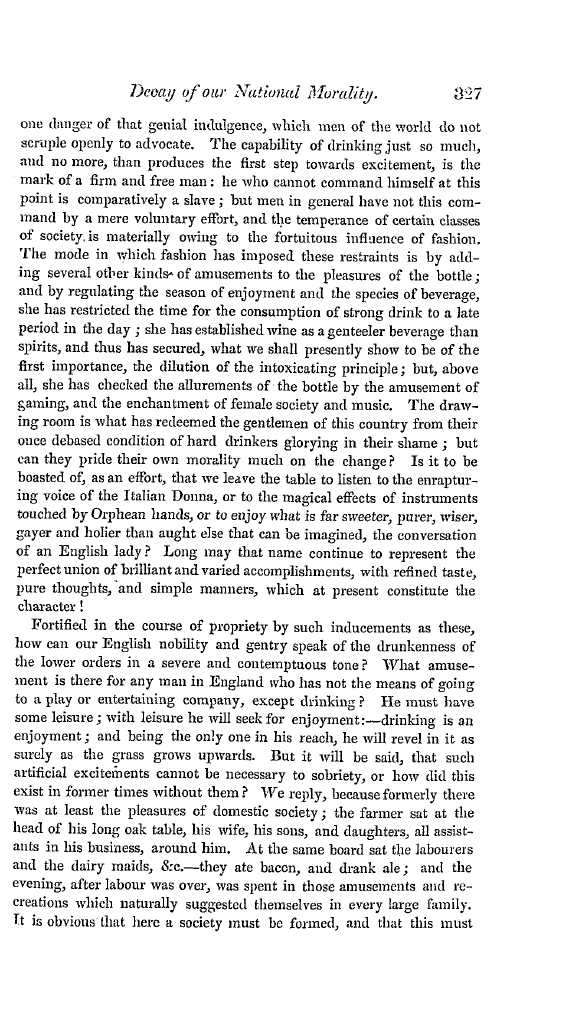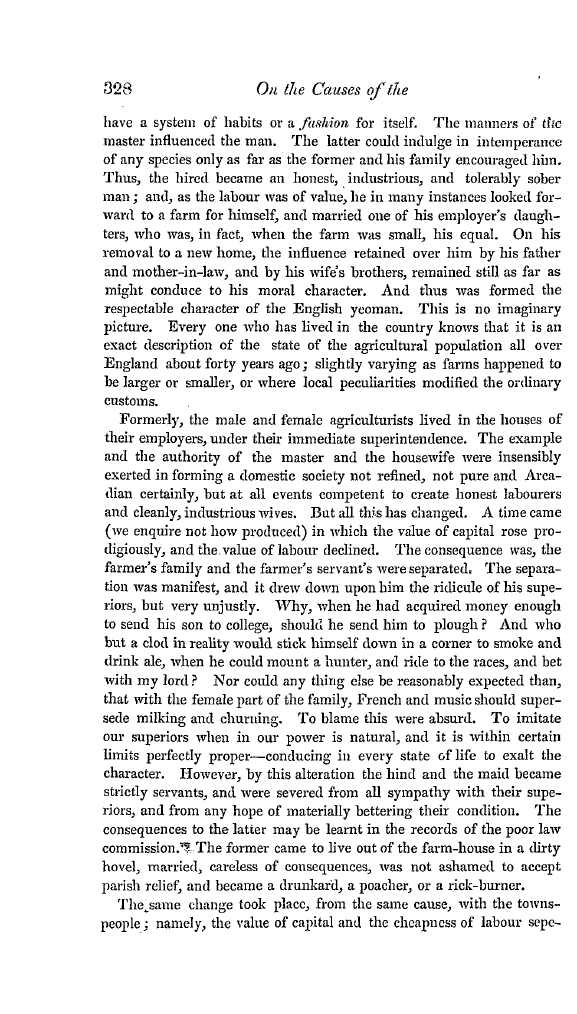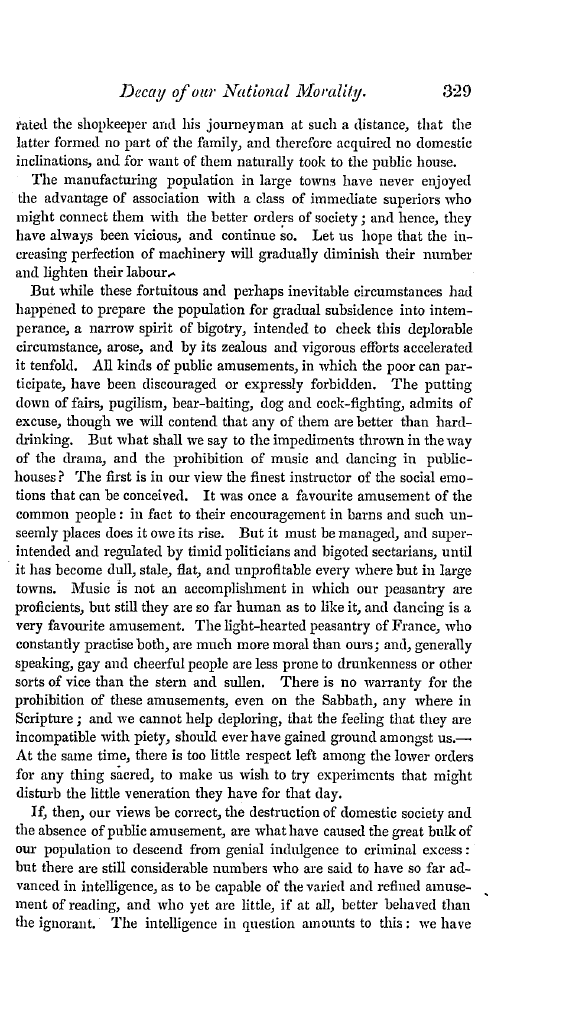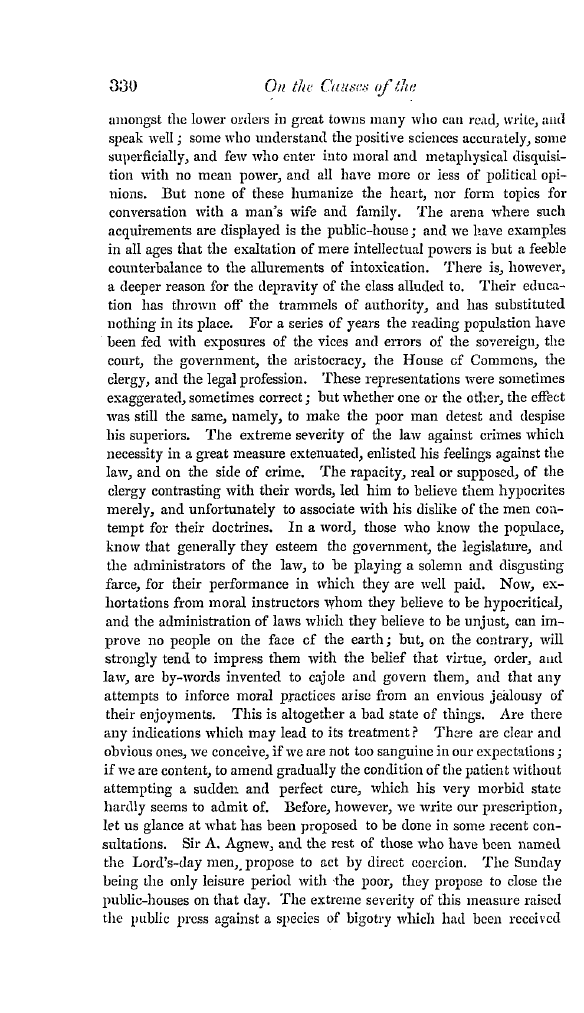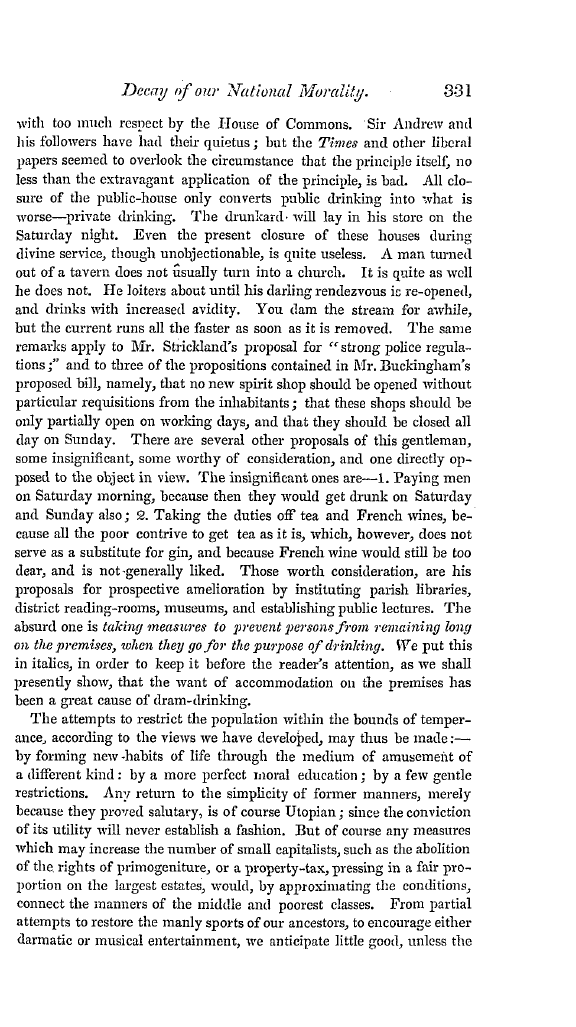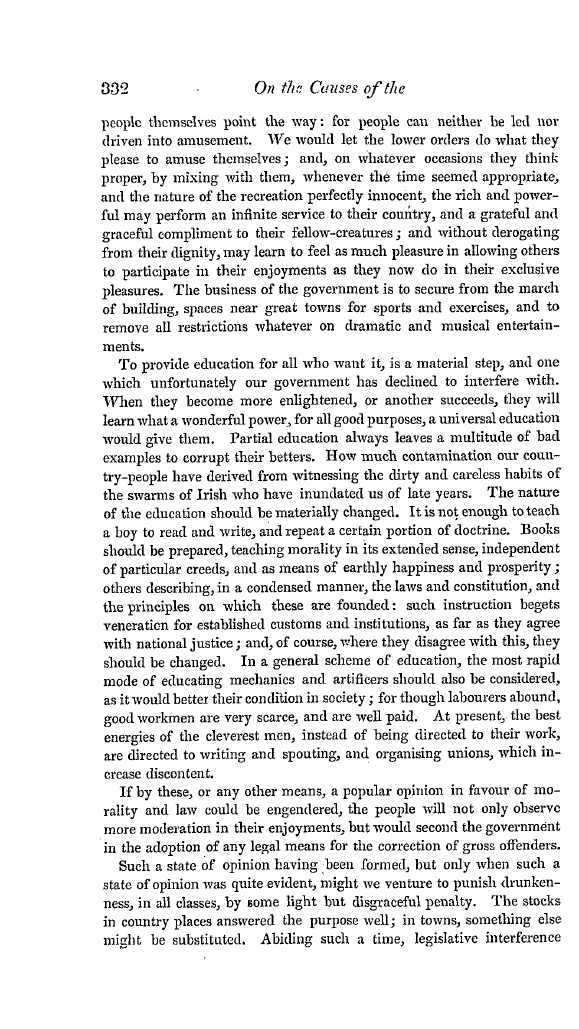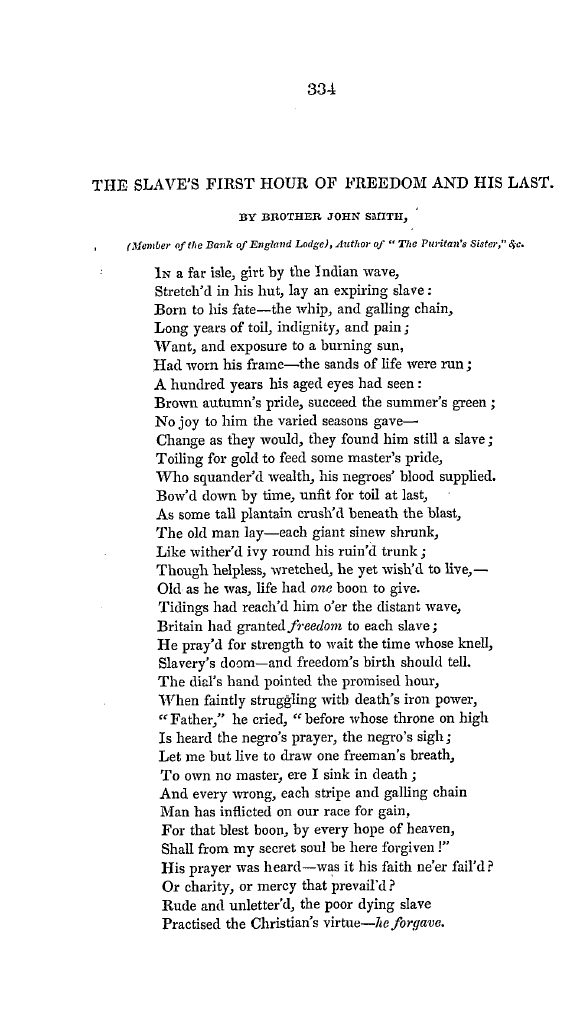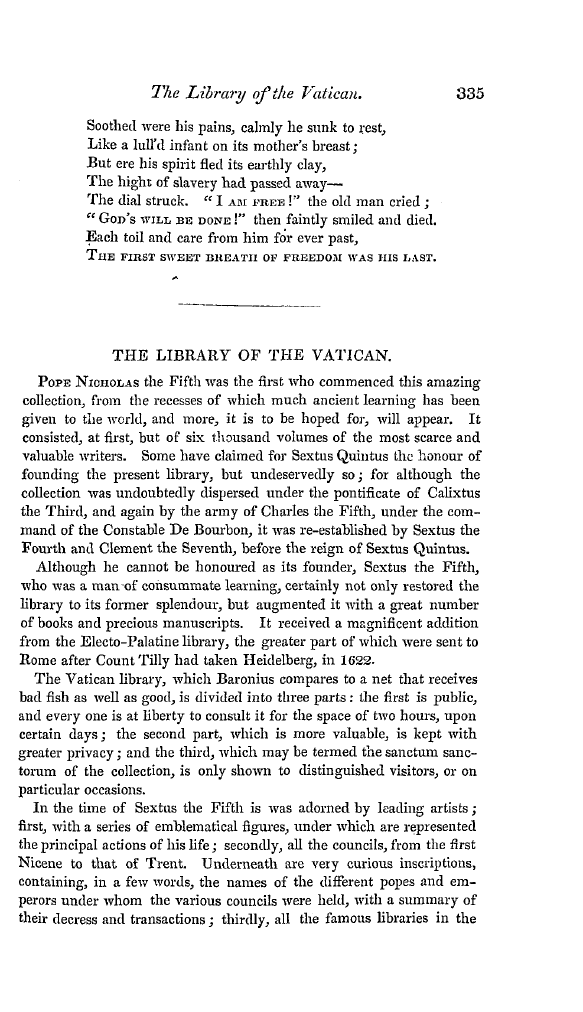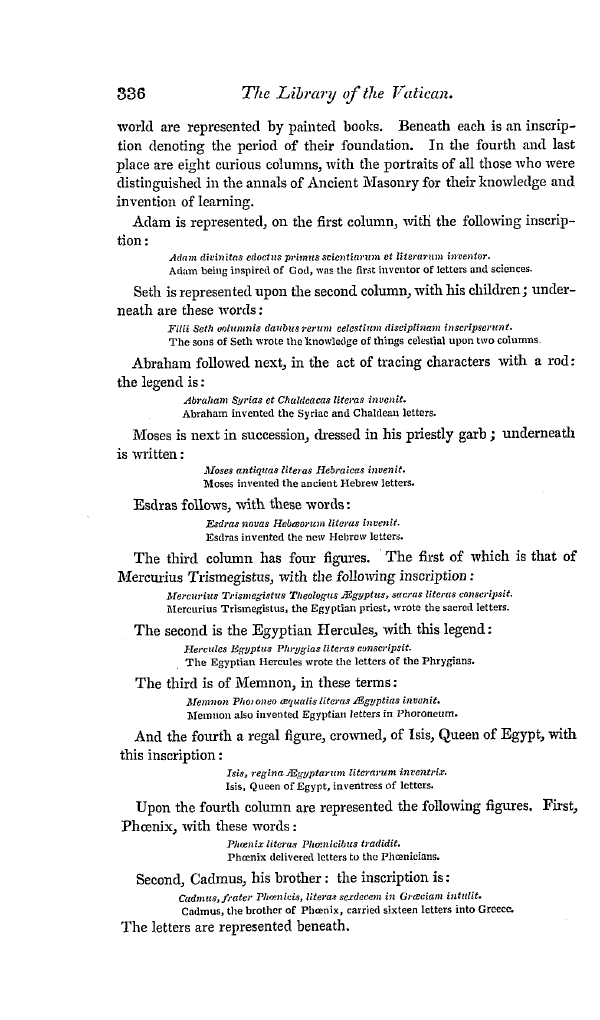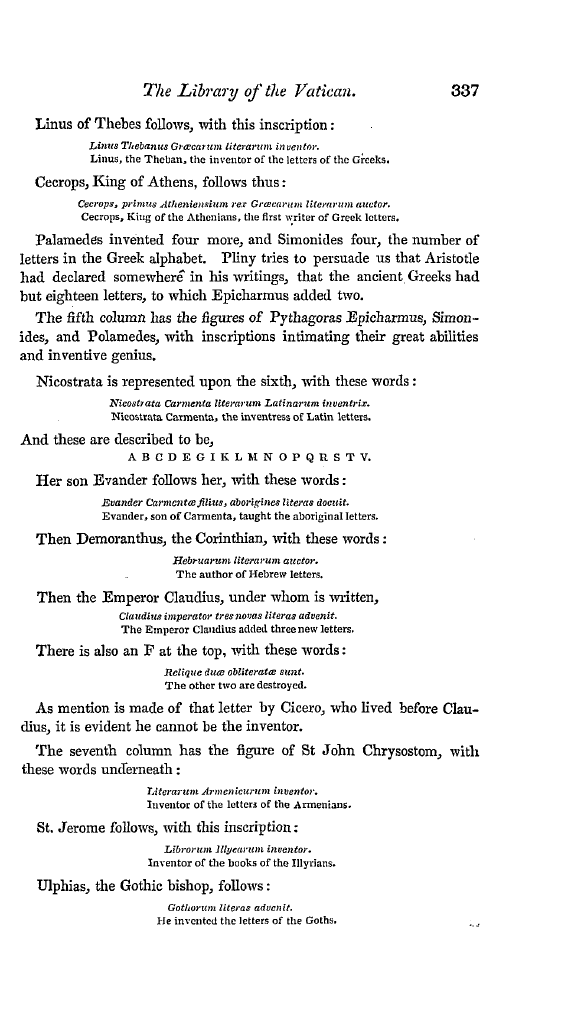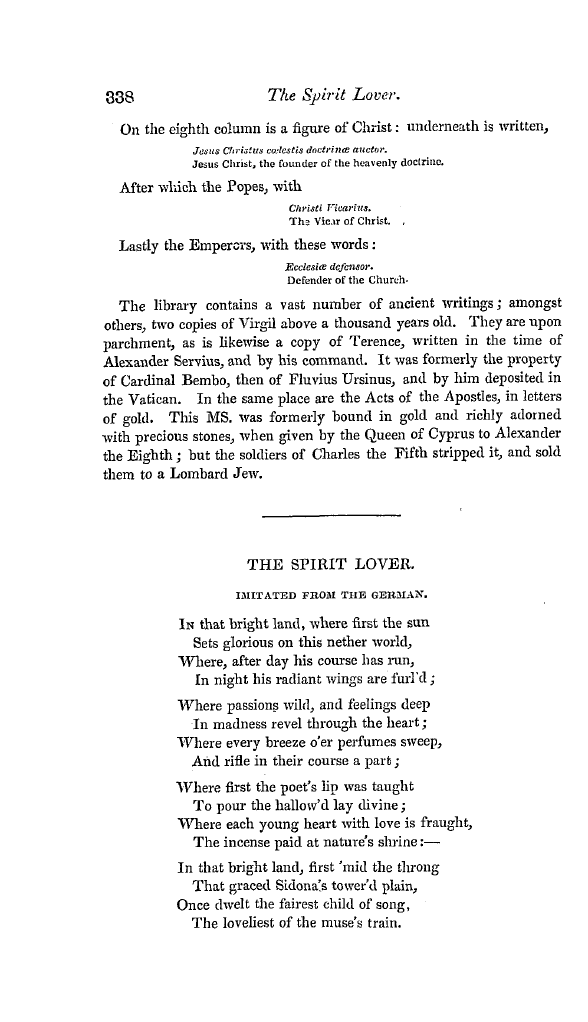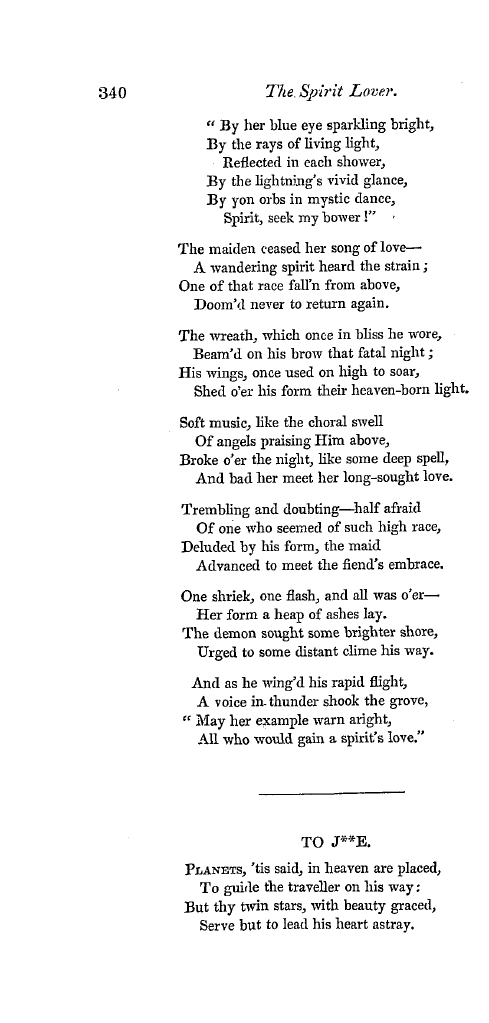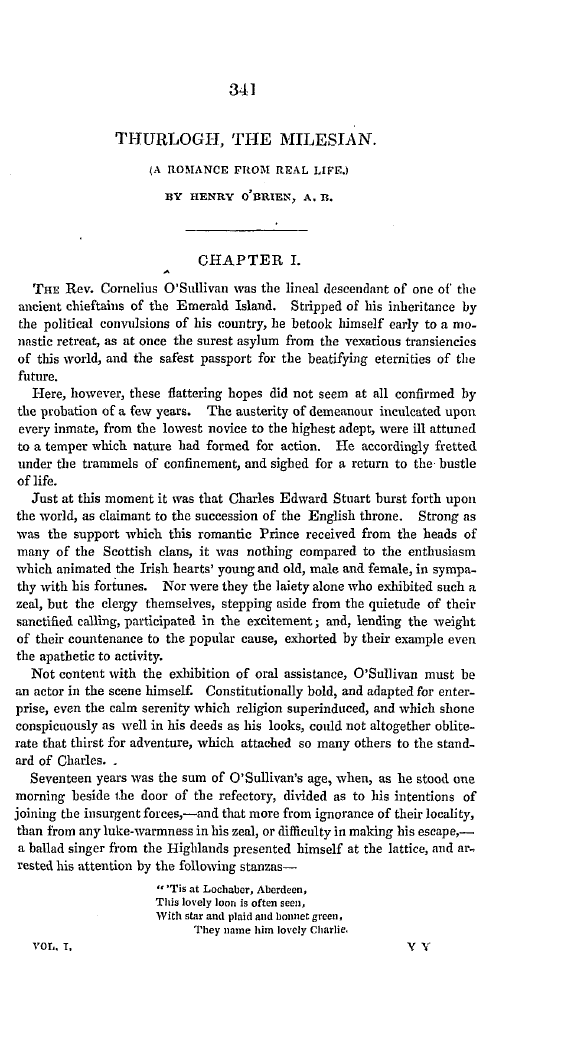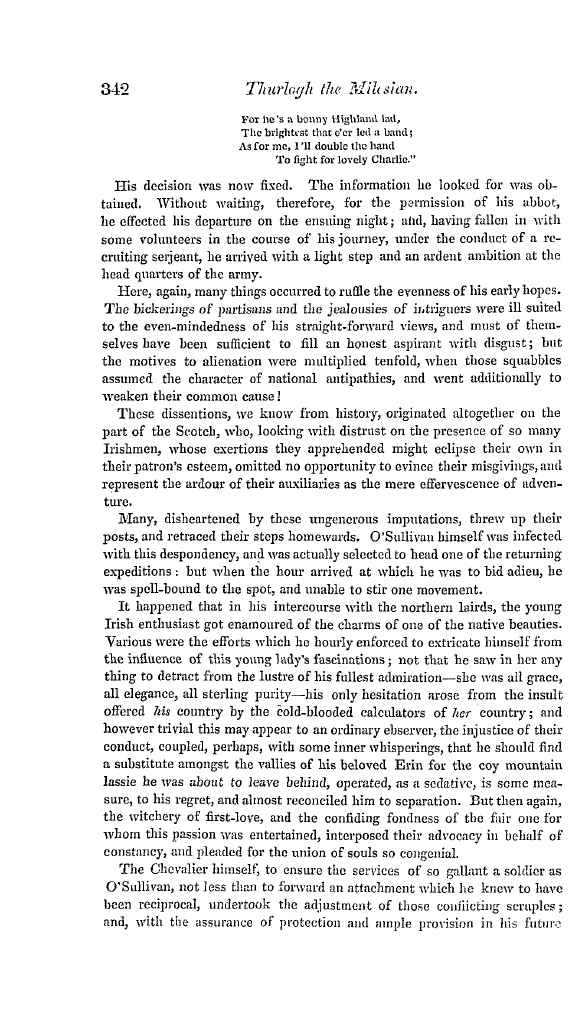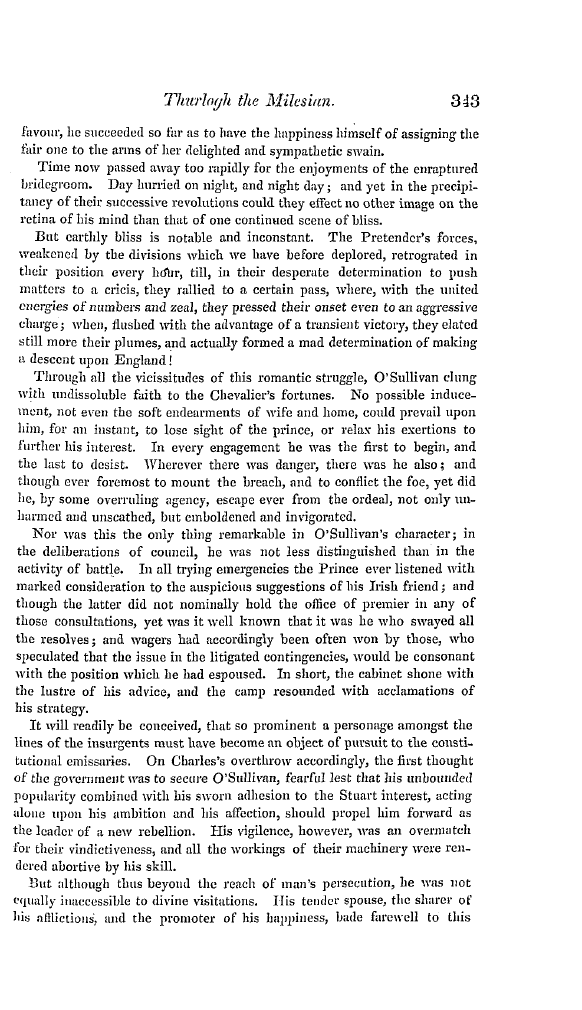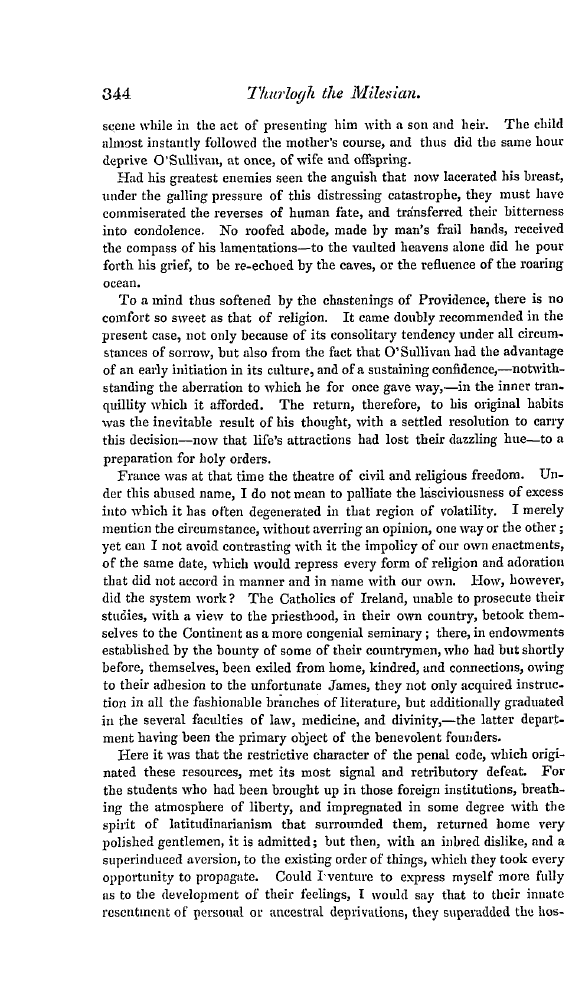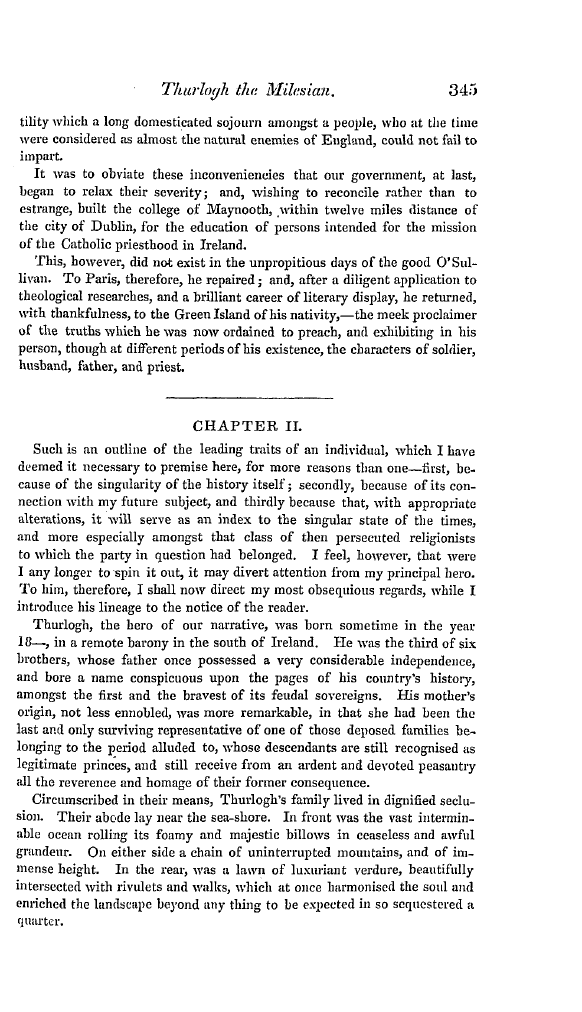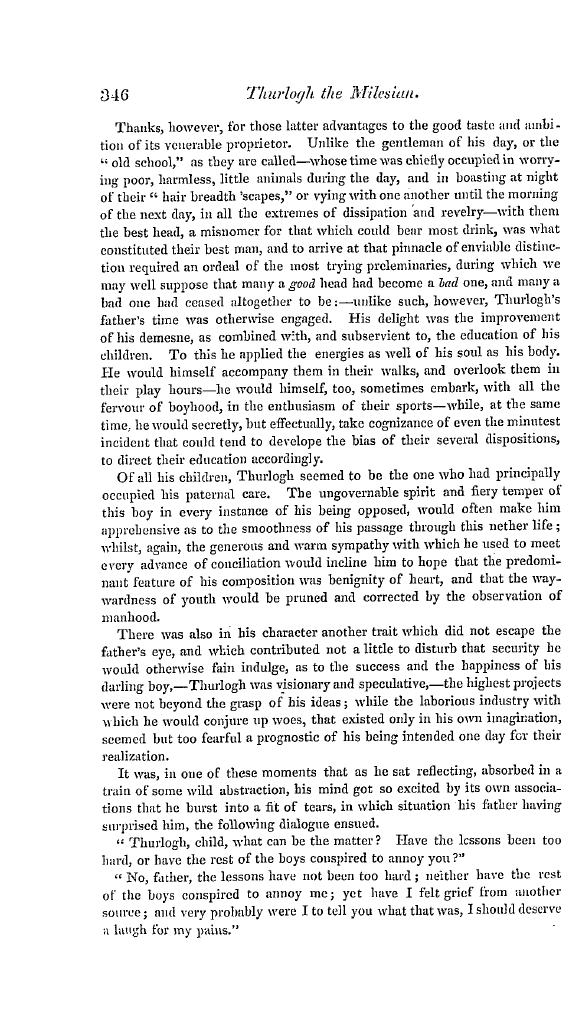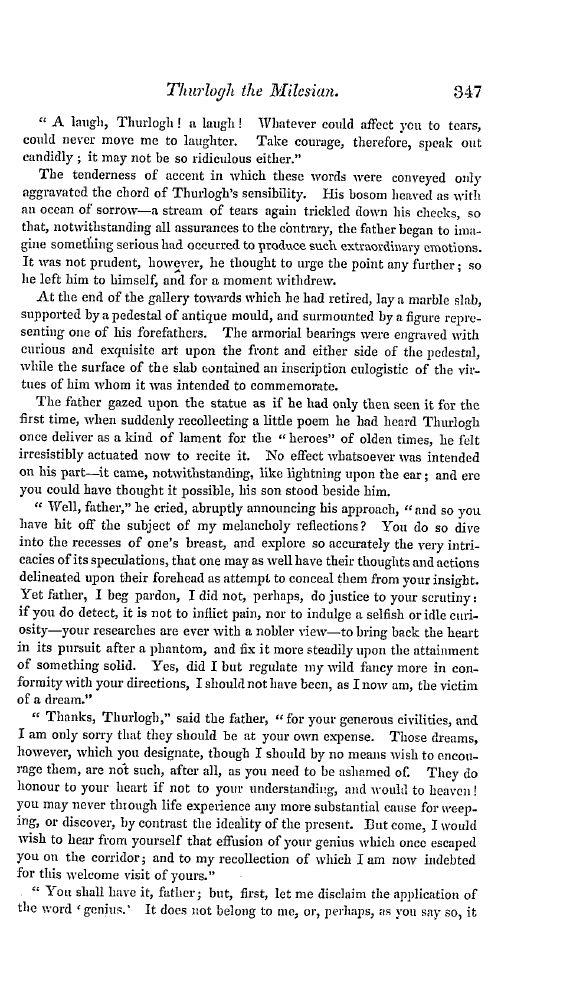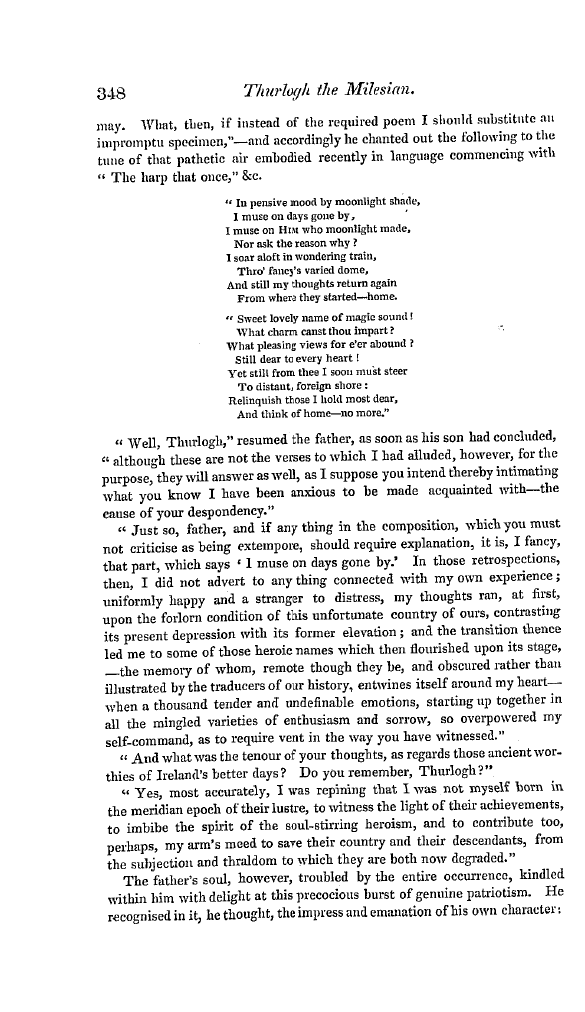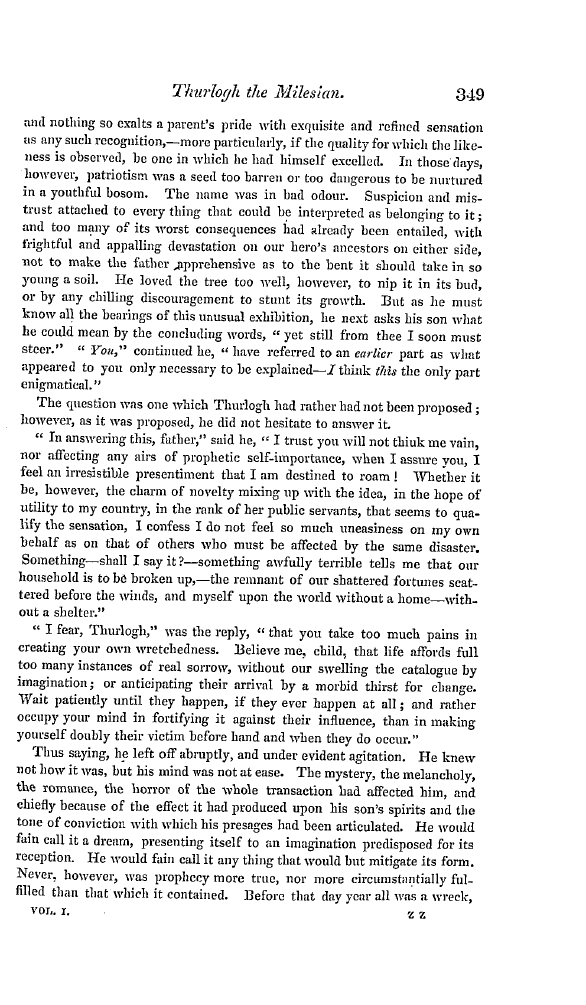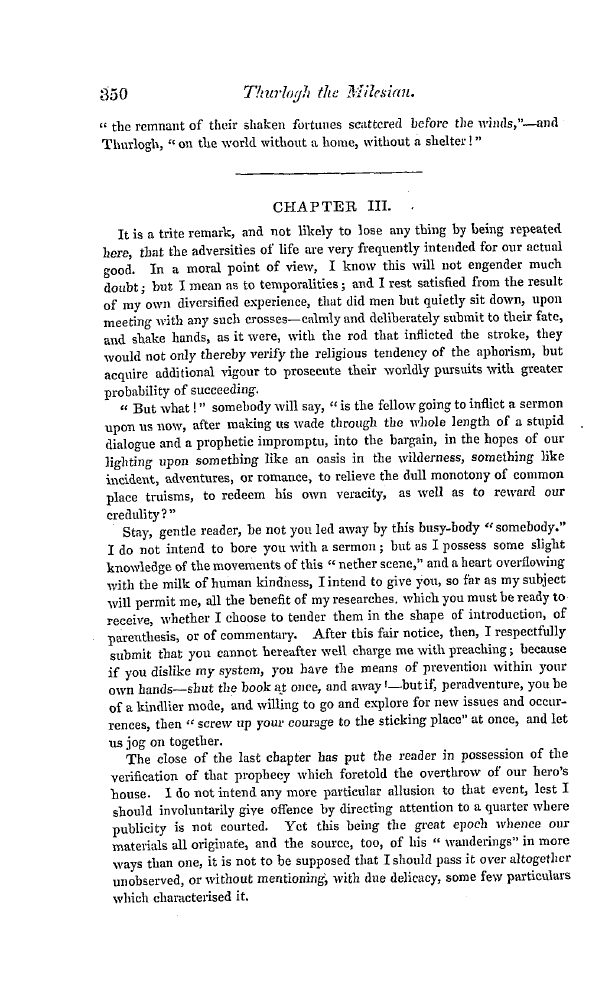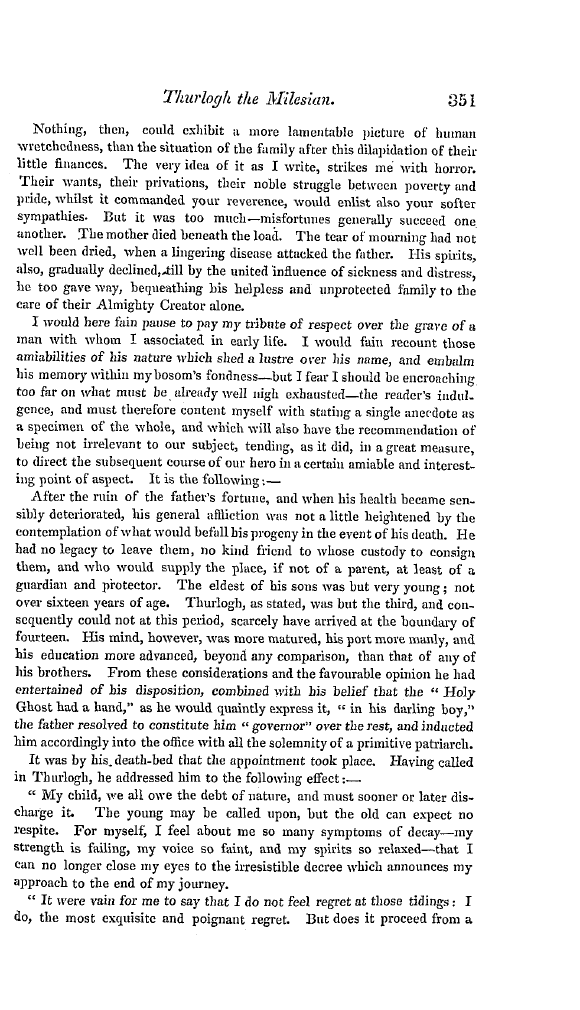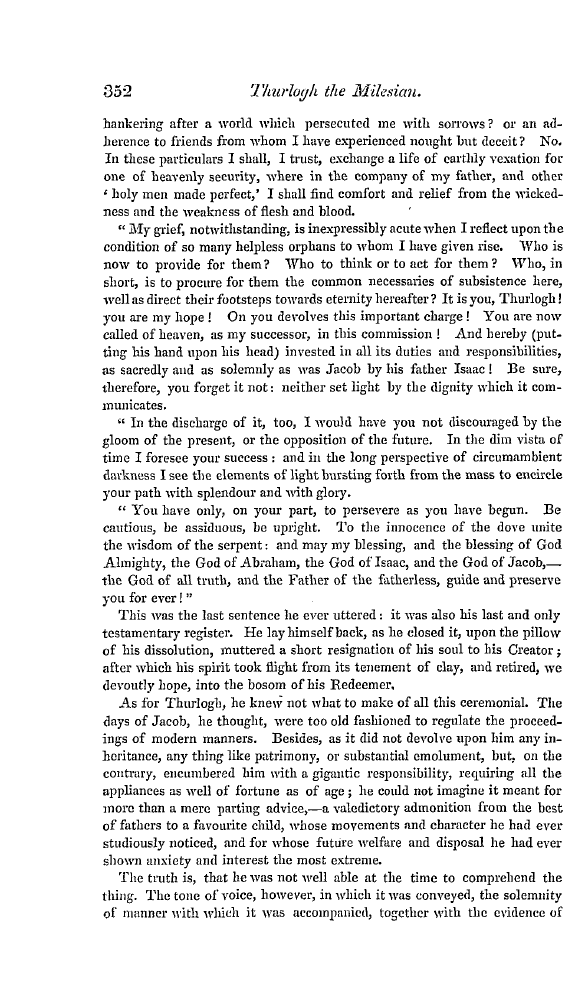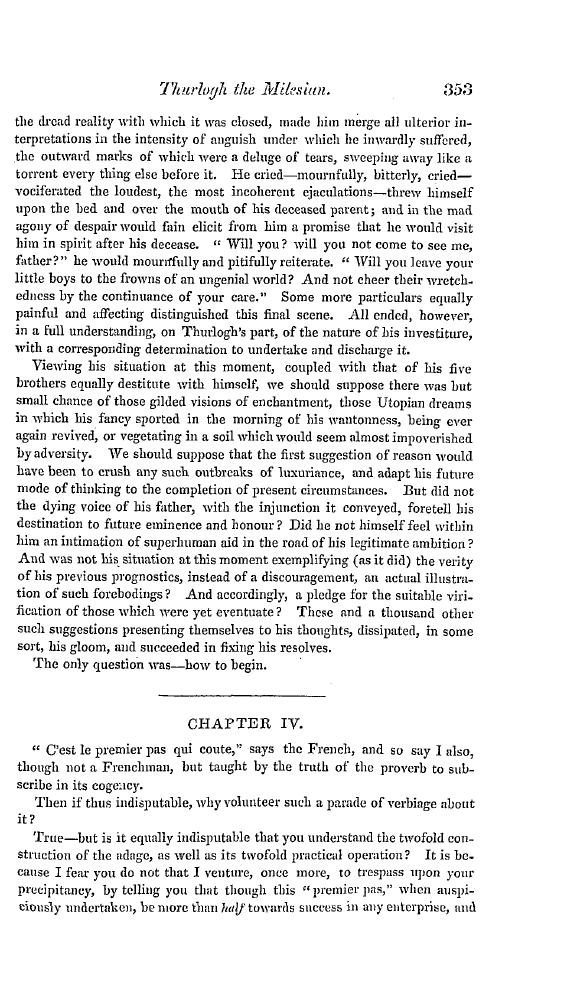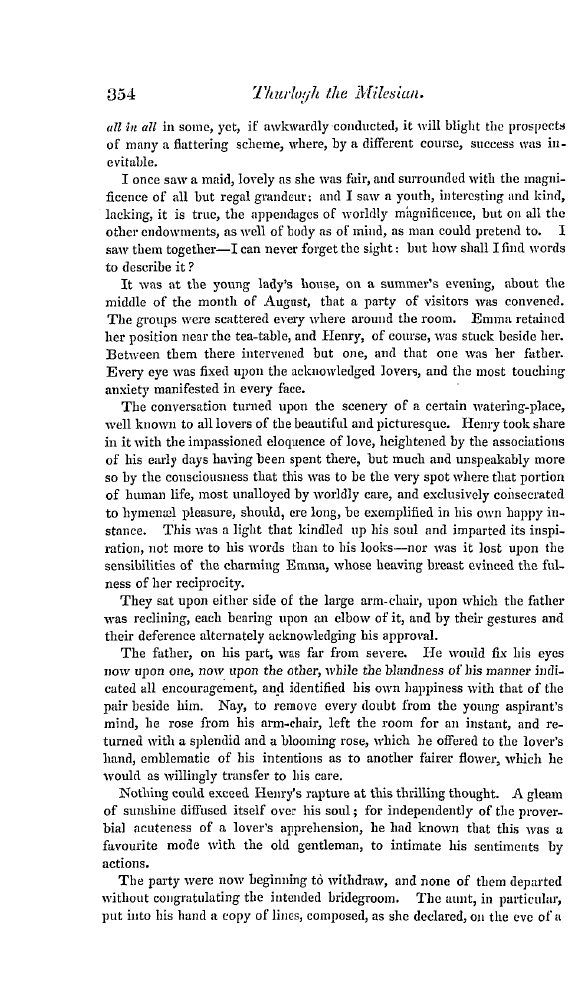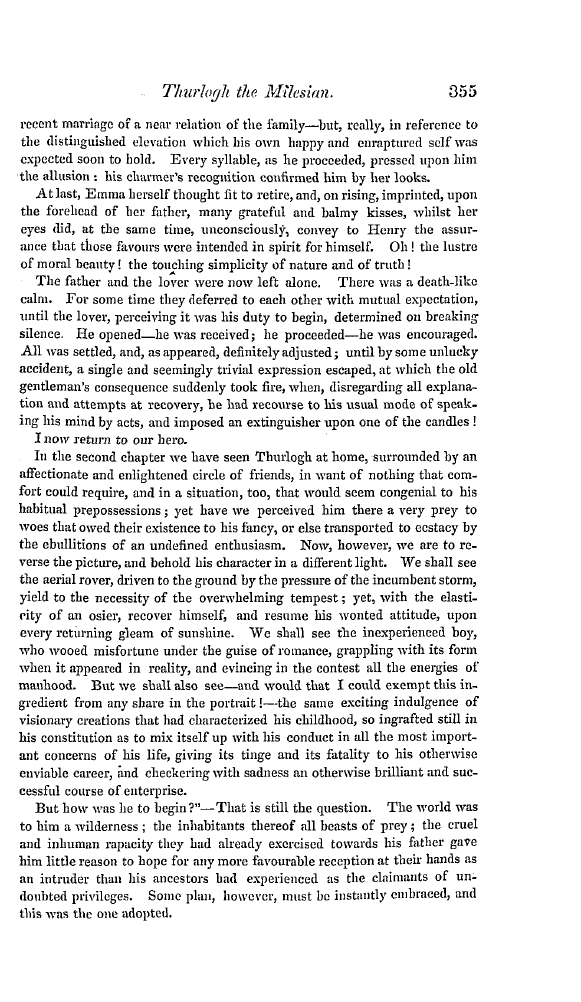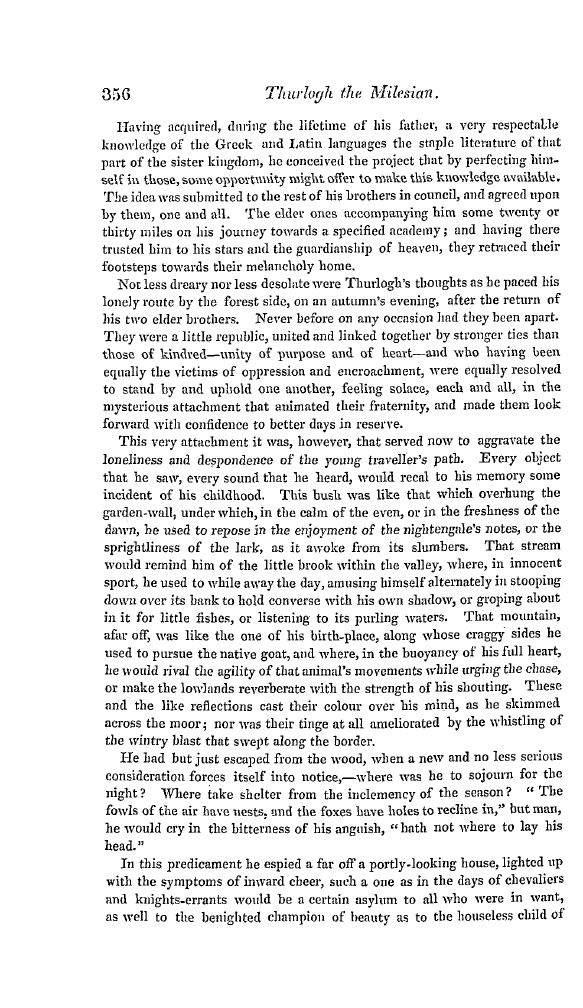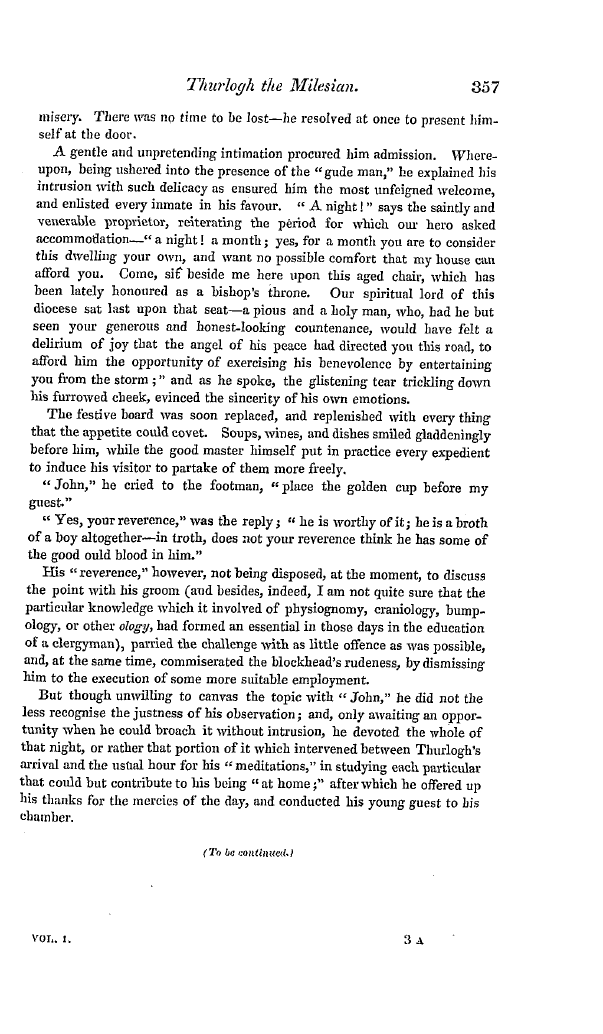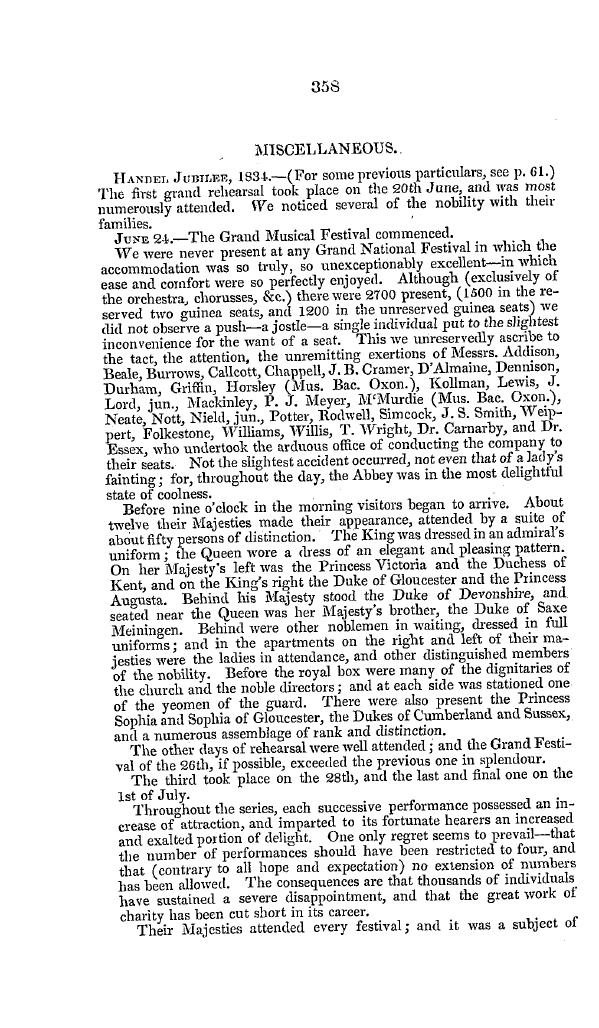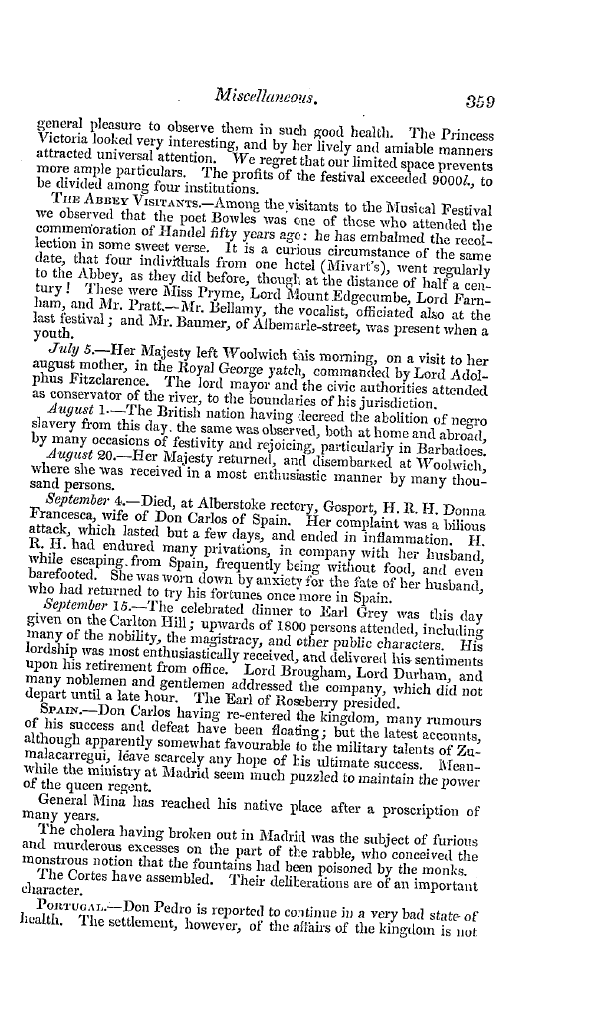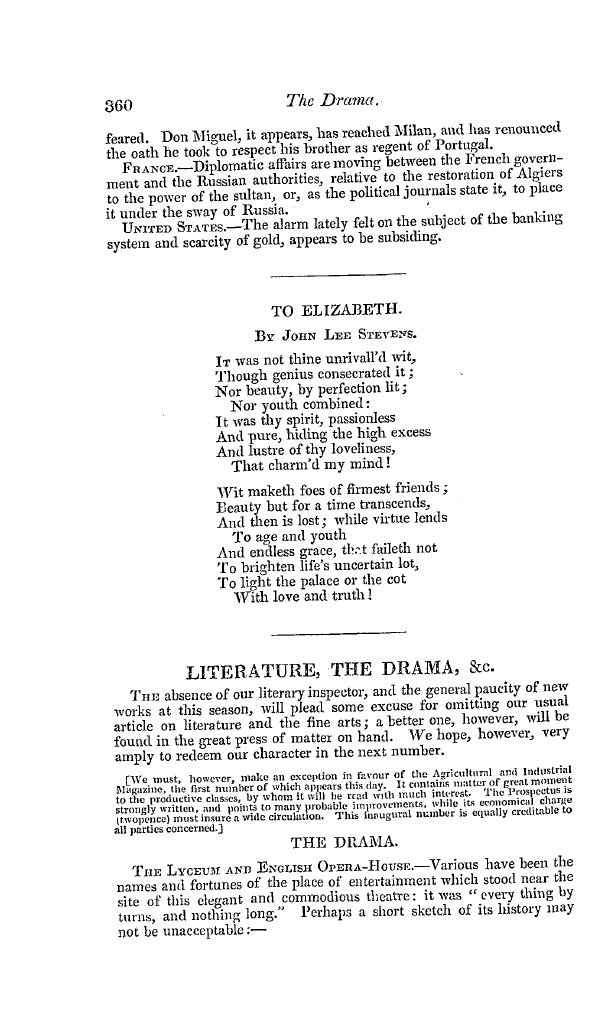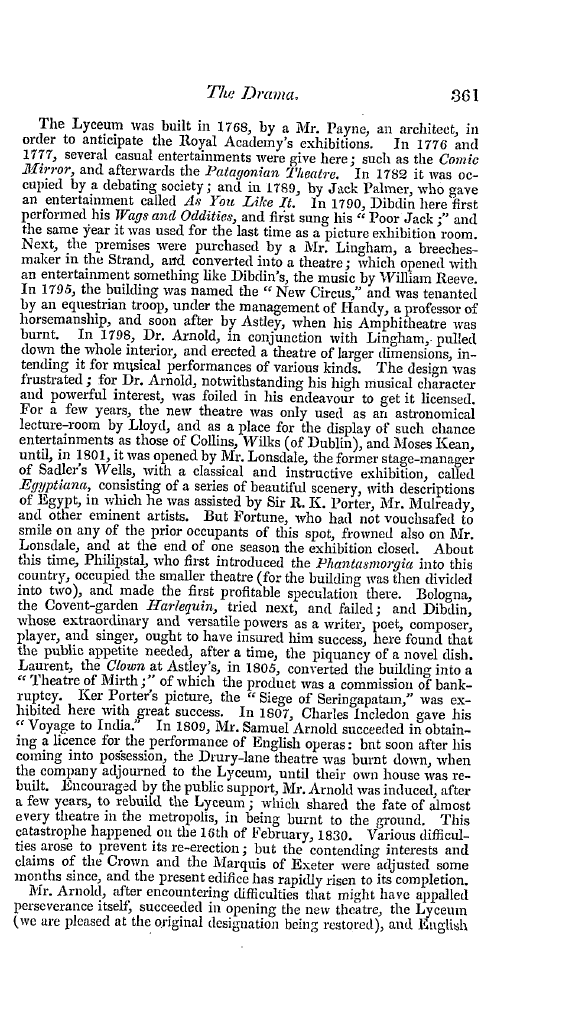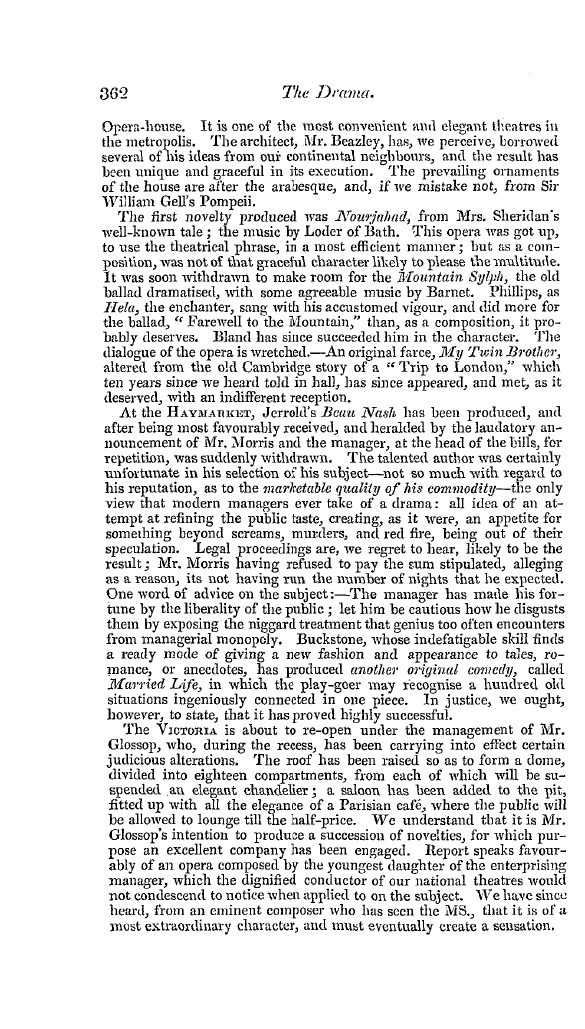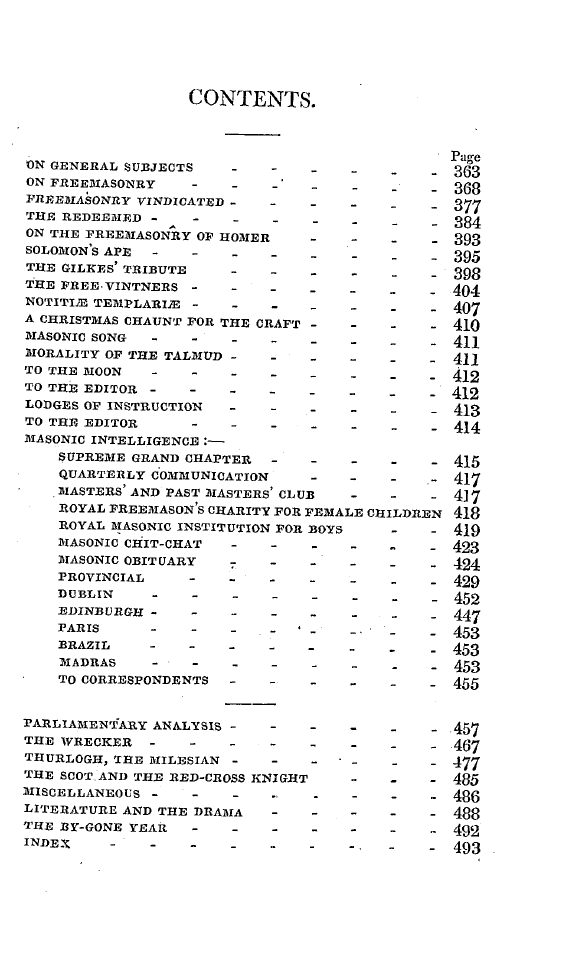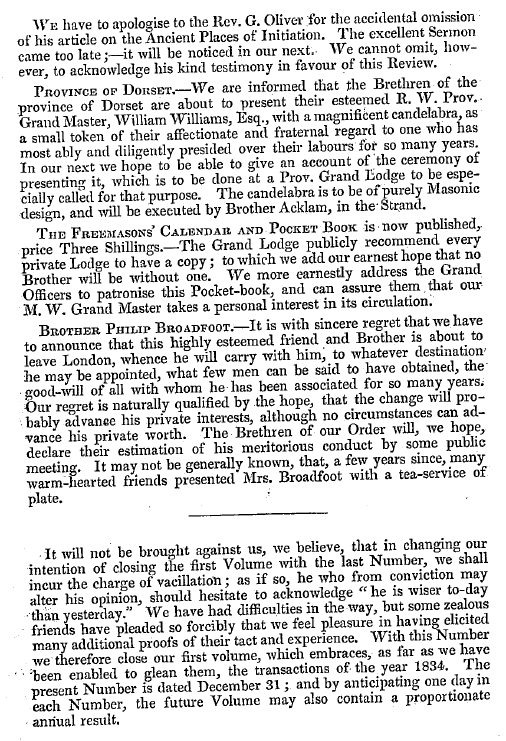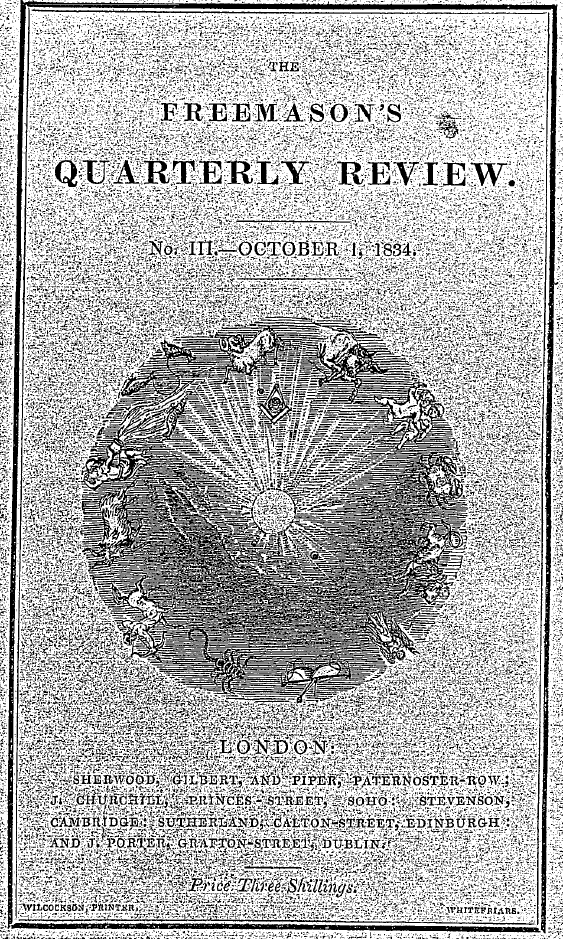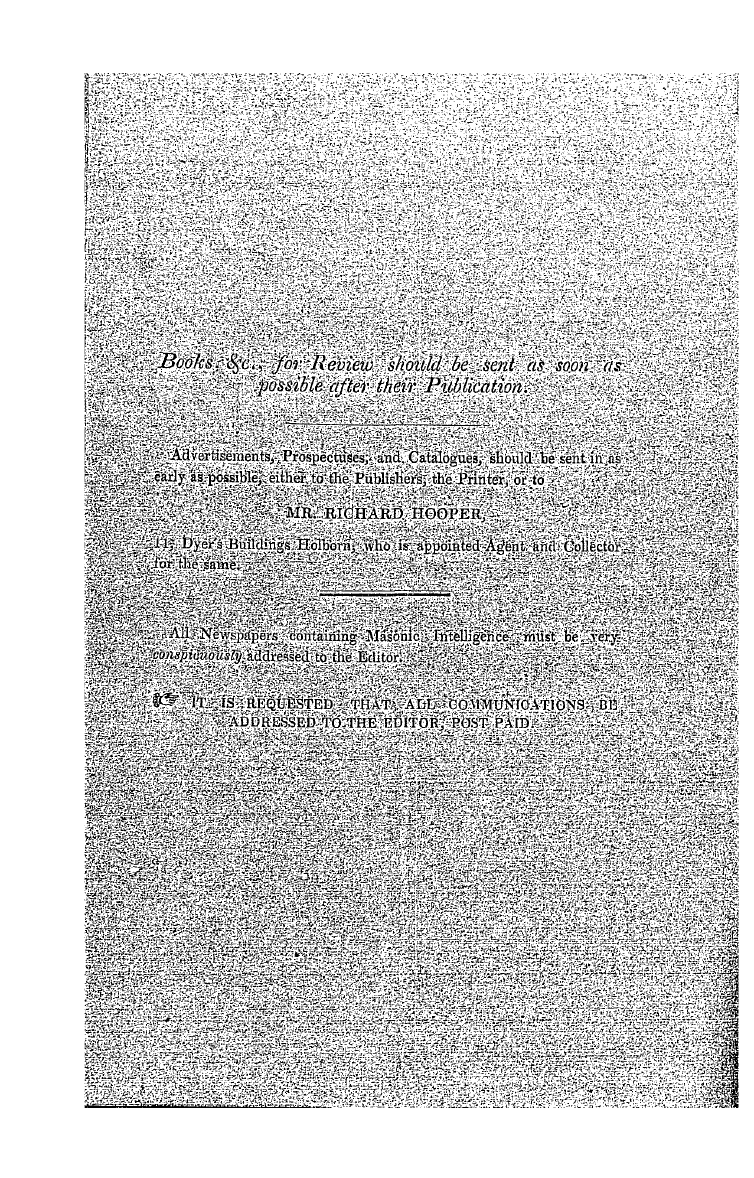-
Articles/Ads
Article TO THE EDITOR OF THE FREEMASONS' REVIEW. ← Page 3 of 8 →
Note: This text has been automatically extracted via Optical Character Recognition (OCR) software.
To The Editor Of The Freemasons' Review.
former existence of an entrance , at this side ofthe Tower , into the interior of the cylinder . Previous to drawing any conclusion regarding the particular description of persons by whom those sculptures were formed , two facts must be determined , which are
these : — First , —It is incumbent upon me to prove , that the figures in question really belong to the ancient idolatry of Hindoostan ; and , second , that they actually occupy the precise situation , at the gate of an ancient Temple , in which , in conformity with the Hindoo mythology , they would necessarily be placed , according to the
ideas entertained by Hindoos , with reference to the figure of the Leonine Elephant , ancl the horse of Kalankee , the tenth ancl destroying Avatar oi Hindoostan , who , according to the ideas of the aboriginal inhabitants of India , will make his apjiearance at the termination of the Kali Yug , or age in which we are at present living .
In order to determine the first of these positions , it is necessary to enter into an explanation of the origin of the Hieroglyphic compounded of a Lion ancl an Elephant , which is very frequently discovered at the entrance of ancient Temples , both on the Continent and in the islands of the East . A Hieroglyphic of this description carved in stone was , some years ago ,
deposited by me iii the museum of the Asiatic Society in Calcutta , and in that figure the Lion is seen above the Elephant , as if the former was in the act of devouring the latter animal , —whilst in the Java Antiquities , the Elephant is usually discovered within the Jaws of a monster , consisting of the Lion ' s mouth , and apparently a dragon ' s or fish's body . It is hence rendered apparent ,
by means of the various combinations in which the two figures are occasionally discovered , that it is not indispensably requisite , according to the notions of idolaters , that the combination of the Lion ancl Elephant should take place in any one peculiar form , but simply that the compound Hieroglyphic should be present , in a particular situation in reference to the Temple , —namely , at
one of its gates , where it happens to be found . Thus , accordingly , we find the Lion and Elephant , combined in various modes , and often separate , at the gates and amongst the ruins of ancient fabrics in India;—and on the western surface of the Scottish monument , the same identical Hieroglyphic is discovered , being a combination of the Elephant with tbe Lion ; the feet of tbe
Note: This text has been automatically extracted via Optical Character Recognition (OCR) software.
To The Editor Of The Freemasons' Review.
former existence of an entrance , at this side ofthe Tower , into the interior of the cylinder . Previous to drawing any conclusion regarding the particular description of persons by whom those sculptures were formed , two facts must be determined , which are
these : — First , —It is incumbent upon me to prove , that the figures in question really belong to the ancient idolatry of Hindoostan ; and , second , that they actually occupy the precise situation , at the gate of an ancient Temple , in which , in conformity with the Hindoo mythology , they would necessarily be placed , according to the
ideas entertained by Hindoos , with reference to the figure of the Leonine Elephant , ancl the horse of Kalankee , the tenth ancl destroying Avatar oi Hindoostan , who , according to the ideas of the aboriginal inhabitants of India , will make his apjiearance at the termination of the Kali Yug , or age in which we are at present living .
In order to determine the first of these positions , it is necessary to enter into an explanation of the origin of the Hieroglyphic compounded of a Lion ancl an Elephant , which is very frequently discovered at the entrance of ancient Temples , both on the Continent and in the islands of the East . A Hieroglyphic of this description carved in stone was , some years ago ,
deposited by me iii the museum of the Asiatic Society in Calcutta , and in that figure the Lion is seen above the Elephant , as if the former was in the act of devouring the latter animal , —whilst in the Java Antiquities , the Elephant is usually discovered within the Jaws of a monster , consisting of the Lion ' s mouth , and apparently a dragon ' s or fish's body . It is hence rendered apparent ,
by means of the various combinations in which the two figures are occasionally discovered , that it is not indispensably requisite , according to the notions of idolaters , that the combination of the Lion ancl Elephant should take place in any one peculiar form , but simply that the compound Hieroglyphic should be present , in a particular situation in reference to the Temple , —namely , at
one of its gates , where it happens to be found . Thus , accordingly , we find the Lion and Elephant , combined in various modes , and often separate , at the gates and amongst the ruins of ancient fabrics in India;—and on the western surface of the Scottish monument , the same identical Hieroglyphic is discovered , being a combination of the Elephant with tbe Lion ; the feet of tbe


























































